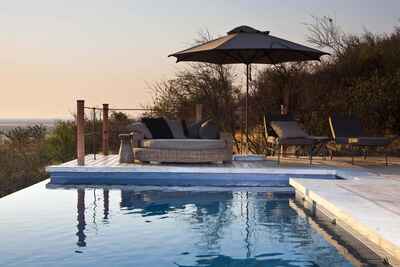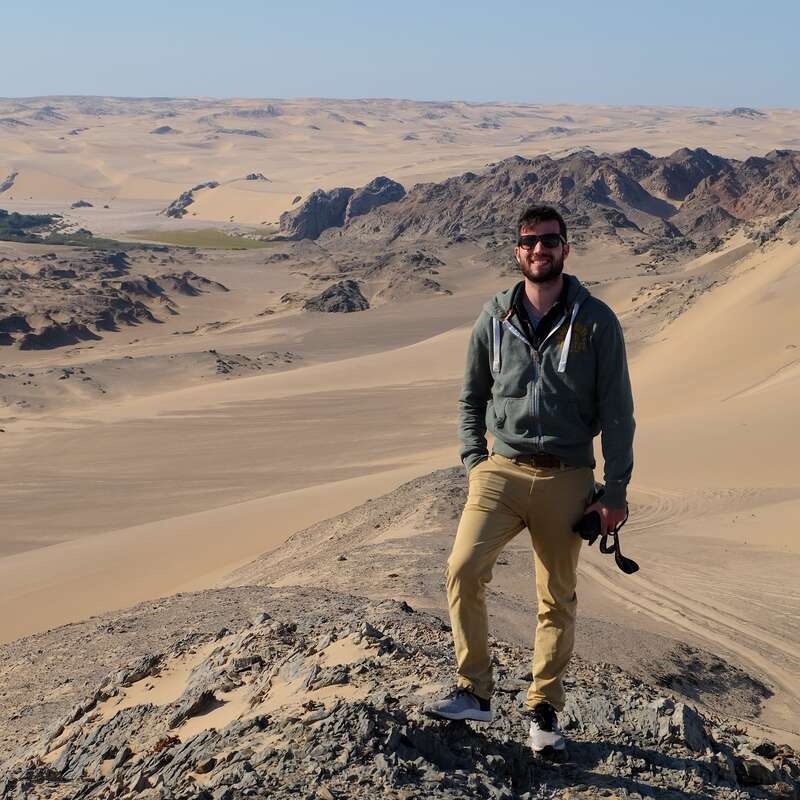About Dolomite Camp
Nestled amongst dolomite outcrops near the Dolomietpunt waterhole, the aptly named Dolomite Camp was opened ...
... in 2011 – and was the first camp to be built in the far west of Namibia’s Etosha National Park. From its vantage point on top of the ridge, the camp has fine views over the plains below and a saltpan in the distance, and gives access to an area that was previously off limits to the public.
Dolomite Camp has opened up the western side of Etosha and provides a good stop to break a journey around northern Namibia. The game here can be good, if unpredictable, and the experience quite exclusive compared with the rest of Etosha. The camp itself has a stunning location, but getting around its long walkways, which are sometimes steep and poorly lit, can be an issue, especially for the less agile. While we found the staff friendly, at times the service was poor.
Our view
Dolomite Camp has opened up the western side of Etosha and provides a good stop to break a journey around northern Namibia. The game here can be good, if unpredictable, and the experience quite exclusive compared with the rest of Etosha. The camp itself has a stunning location, but getting around its long walkways, which are sometimes steep and poorly lit, can be an issue, especially for the less agile. While we found the staff friendly, at times the service was poor.
Accommodation
20 chalets
Children
Best for 12+
Open
All year
Activities

4WD Safari

Birdwatching

Night drive

Private activities
Traveller reviews of Dolomite Camp
98 real, un-edited reviews from Expert Africa's travellers.
Arrived 1 Apr 2025, 2 nights
"Dolomite Camp review"
Overall rating: Good
Arrived 10 Nov 2023, 1 nights
"Dolomite Camp review"
Overall rating: Good
Arrived 8 Nov 2022, 1 nights
"Dolomite Camp review"
Overall rating: Good
Arrived 2 Oct 2022, 3 nights
"Dolomite Camp review"
Overall rating: Average
Arrived 14 Mar 2022, 1 nights
"Dolomite Camp review"
Overall rating: Good
Arrived 16 Dec 2019, 1 nights
"Dolomite Camp review"
Overall rating: Excellent
Arrived 9 Jul 2019, 1 nights
"Dolomite Camp review"
Overall rating: Excellent
Arrived 16 May 2019, 1 nights
"Dolomite Camp Review"
Overall rating: Average
Arrived 10 Sep 2018, 1 nights
"Beautifully rugged and wild"
Overall rating: Excellent
Arrived 25 Apr 2018, 1 nights
"Astonishingly view across Etosha"
Overall rating: Good
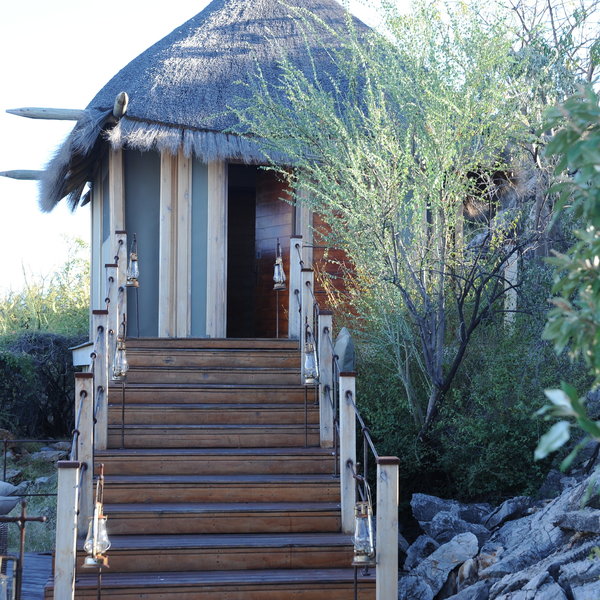
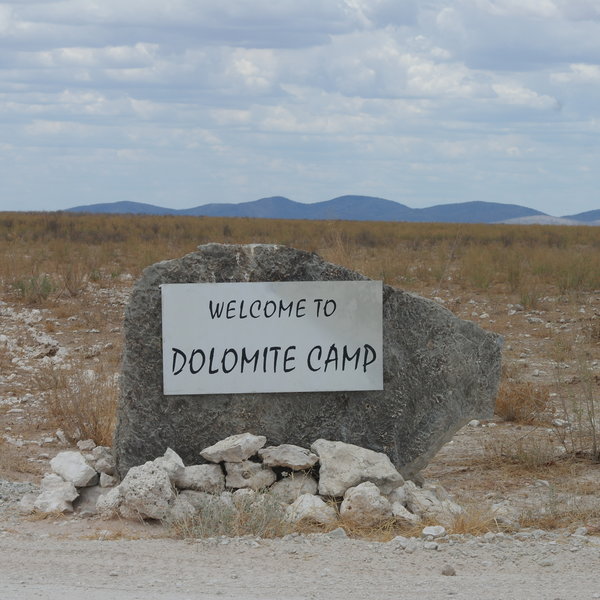
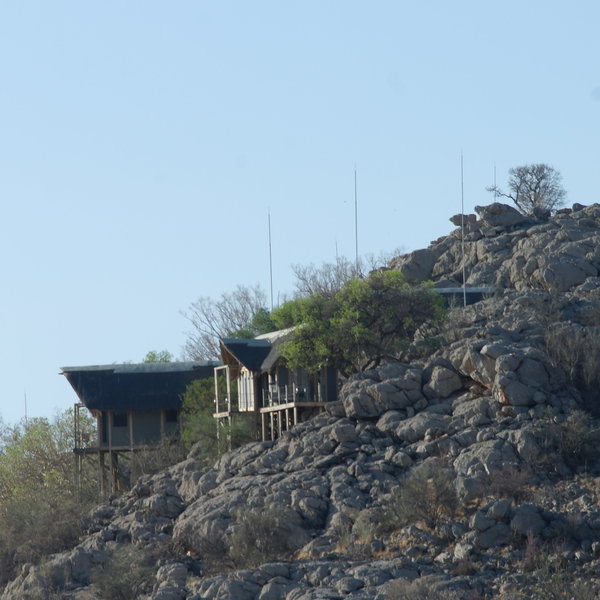
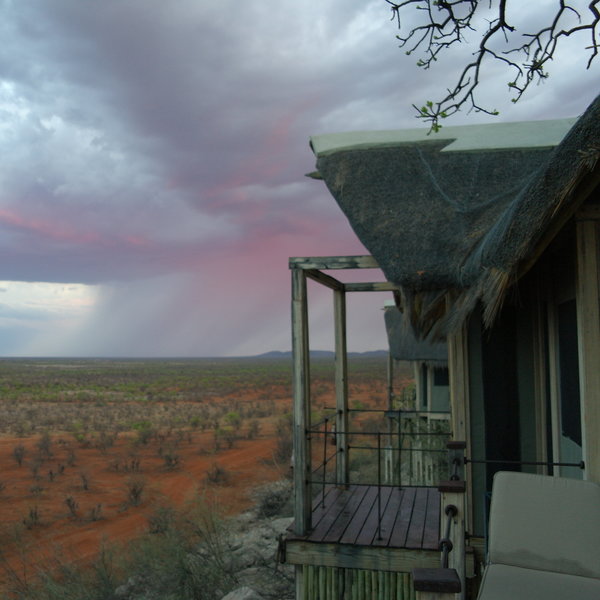
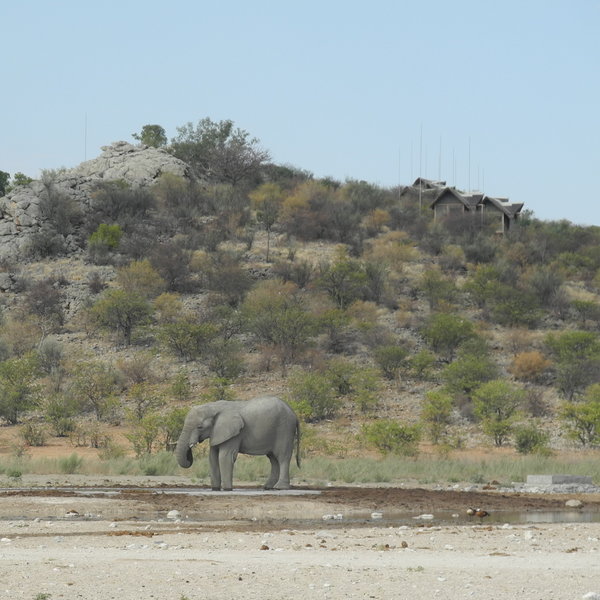
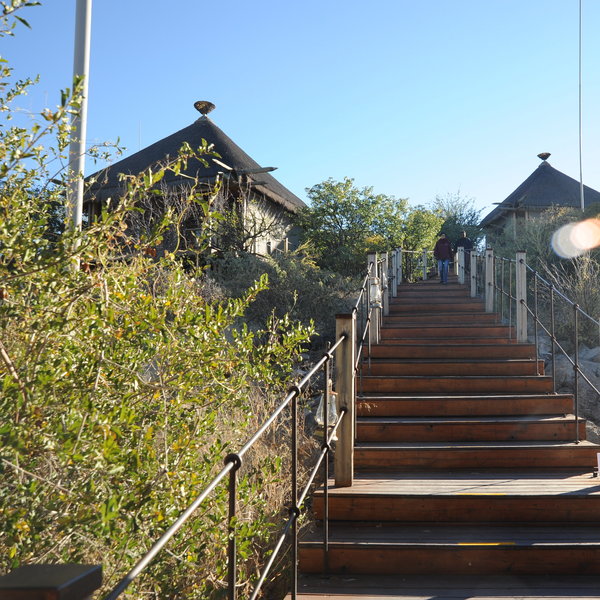
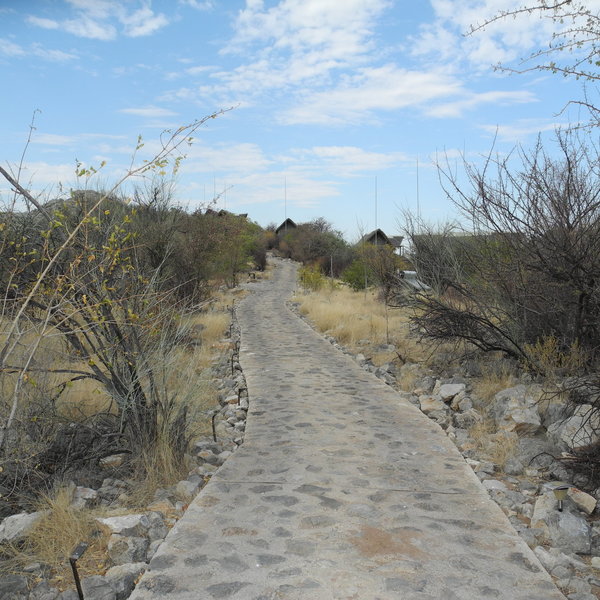
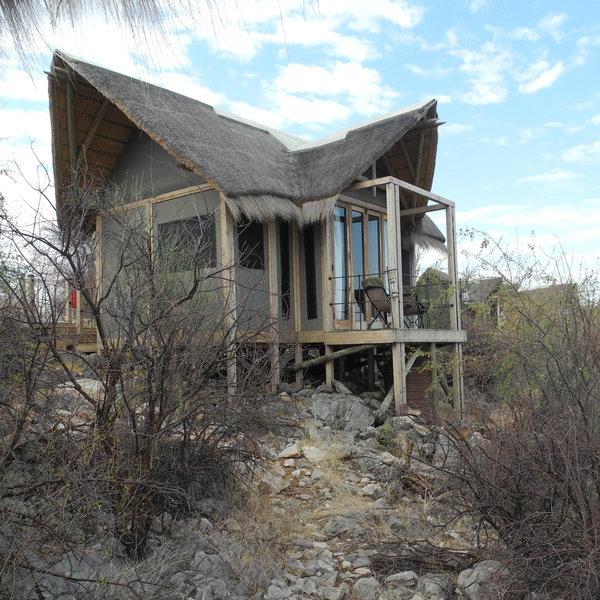
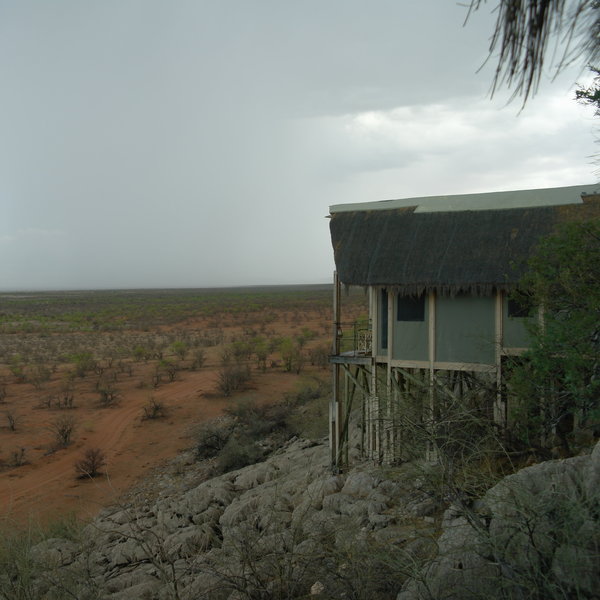
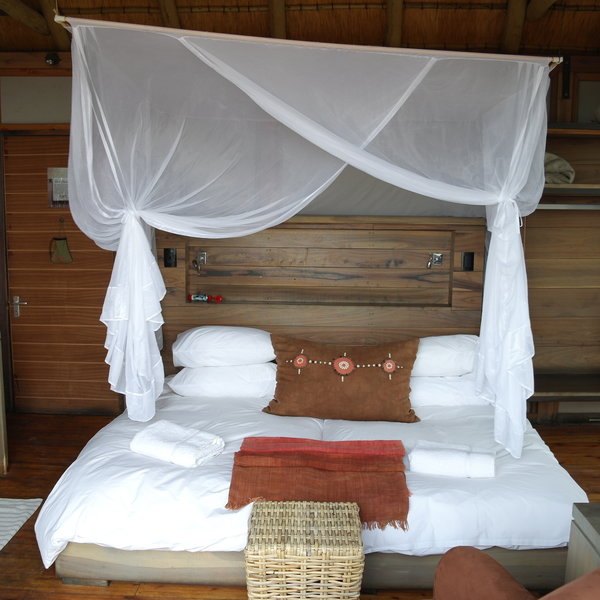
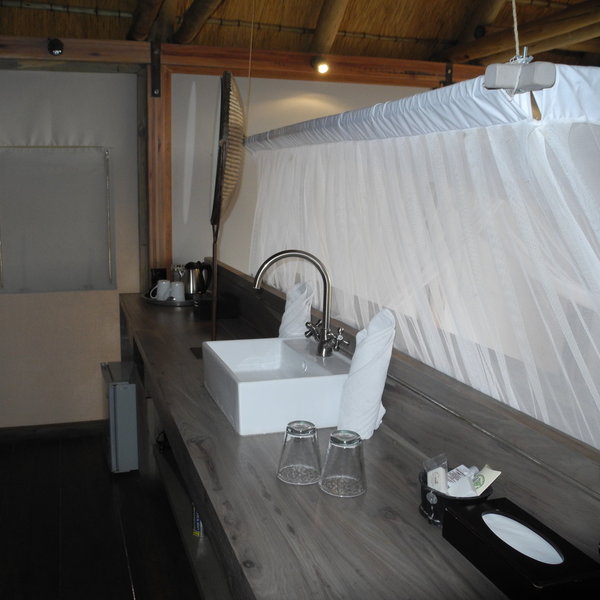
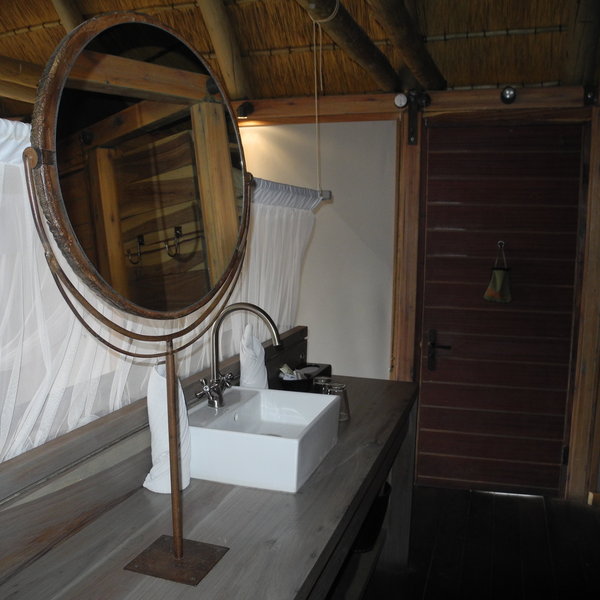
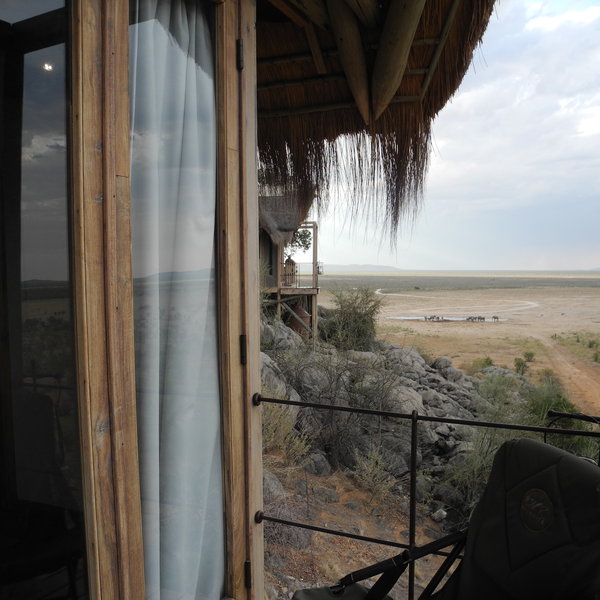
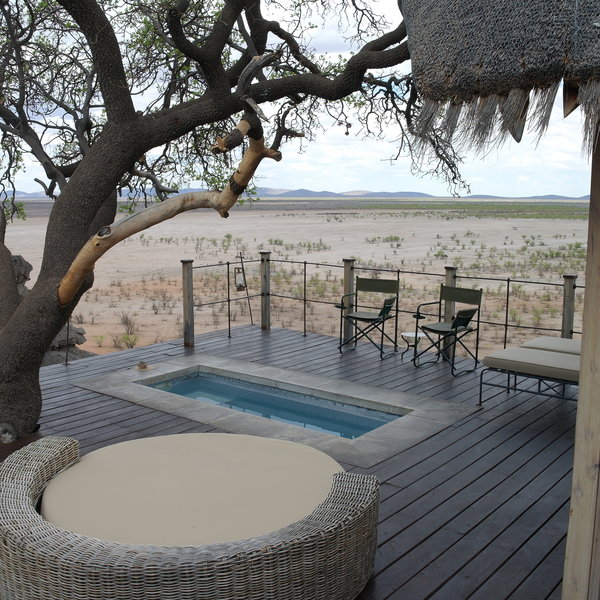
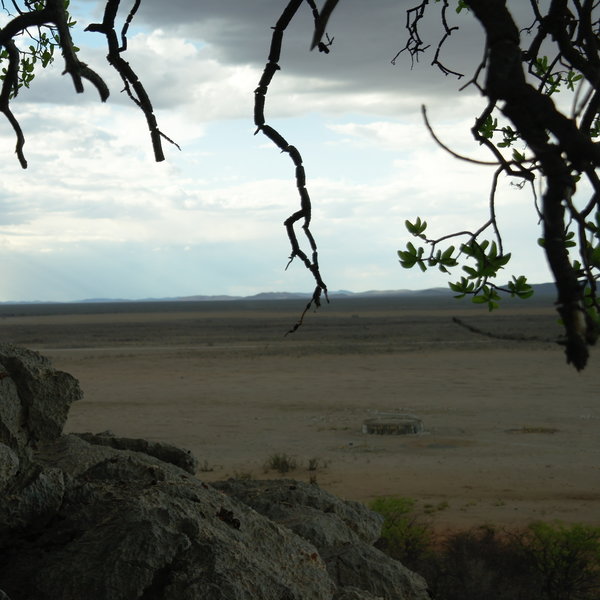
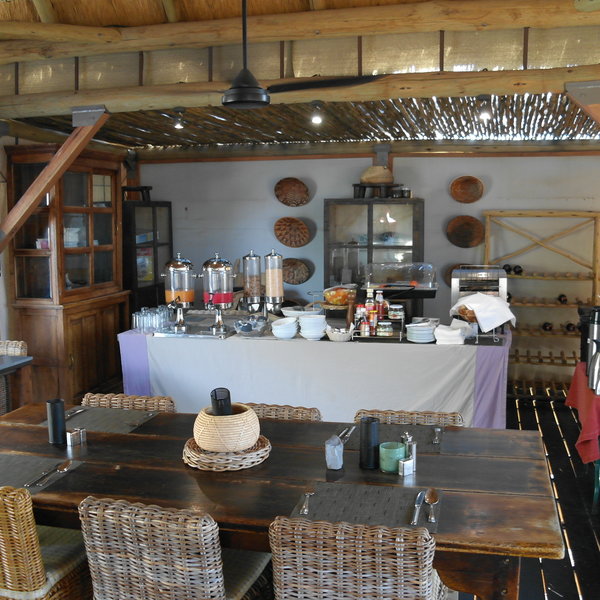
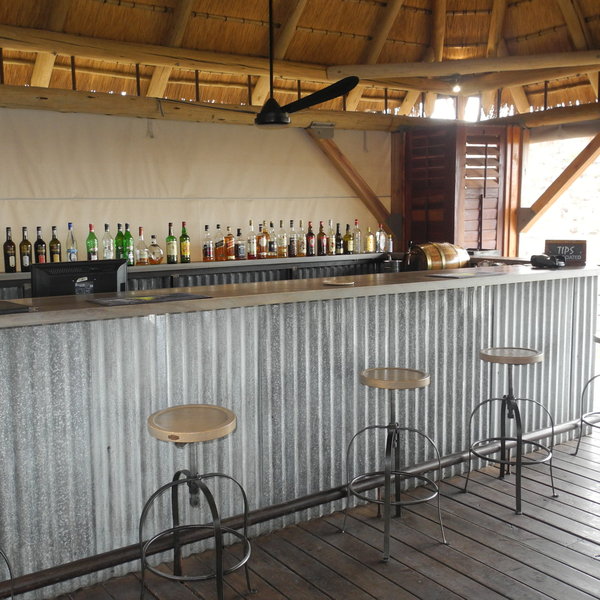
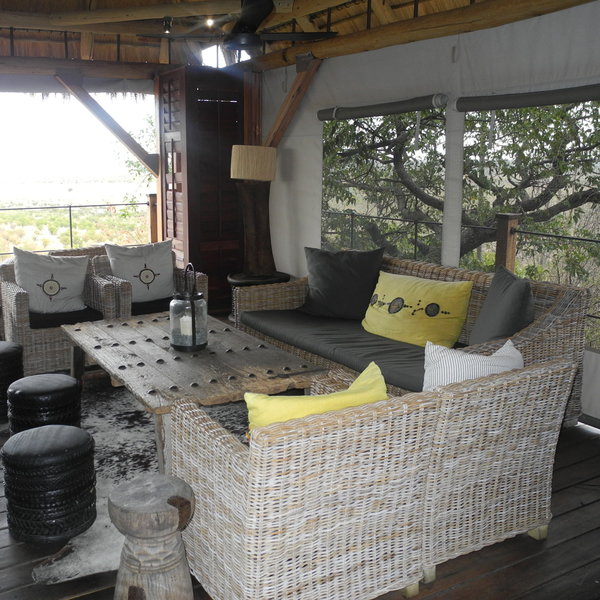
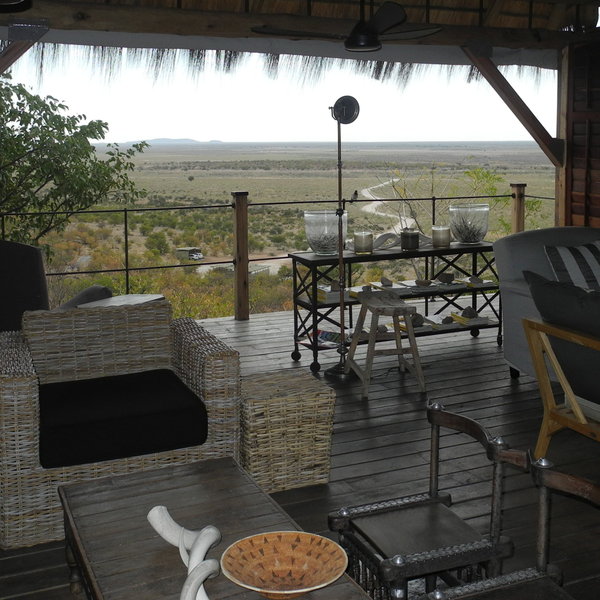
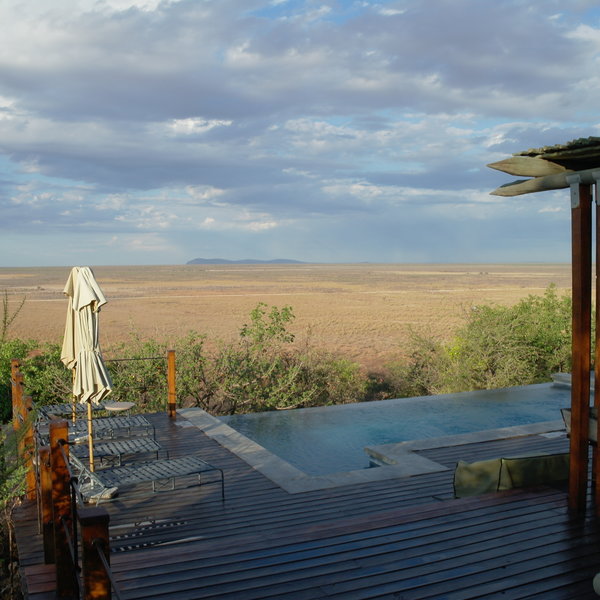
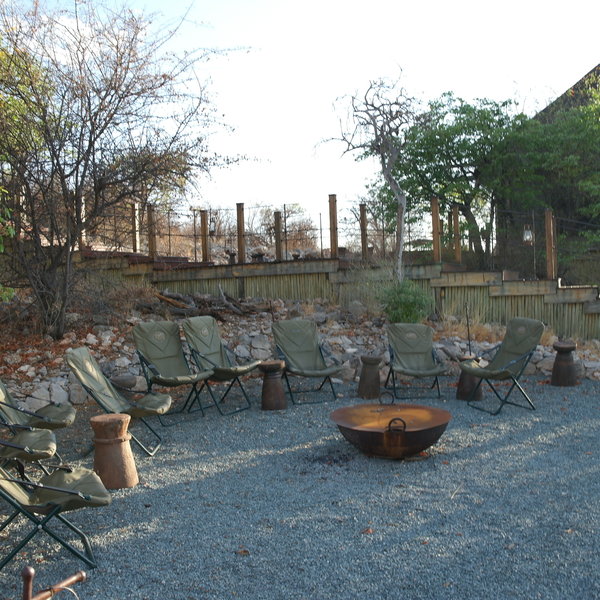
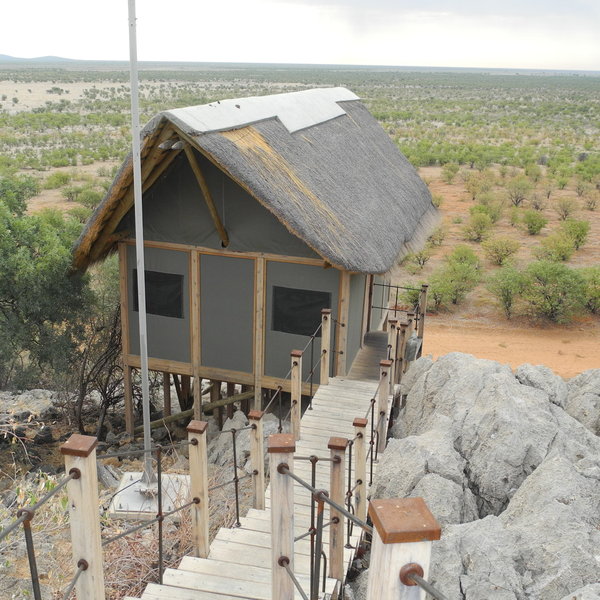
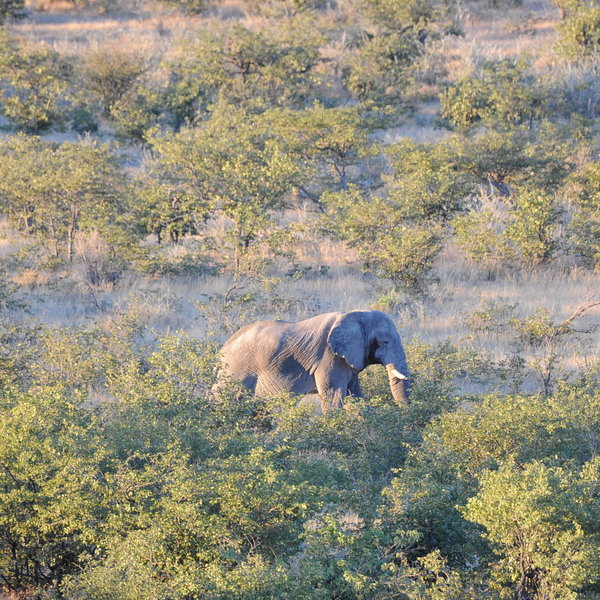
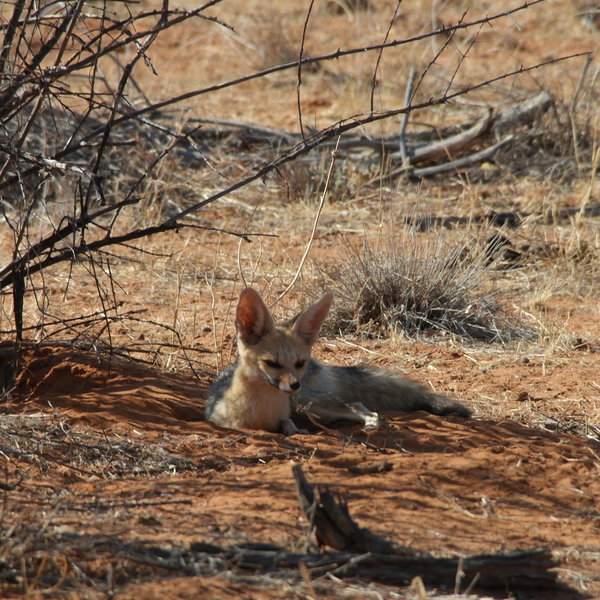
Expert Africa's gallery
When we travel we take lots of photos ourselves to give you a real and un-edited view of the safaris. See our 28 pictures of Dolomite Camp to get the candid view.
View galleryDolomite Camp: Our full report
Nestled amongst dolomite outcrops near the Dolomietpunt waterhole, the aptly named Dolomite Camp was opened ...
... in 2011 – and was the first camp to be built in the far west of Namibia’s Etosha National Park. From its vantage point on top of the ridge, the camp has fine views over the plains below and a saltpan in the distance, and gives access to an area that was previously off limits to the public.
Dolomite is owned and run by the parastatal Namibia Wildlife Resorts, who own a number of lodges in parks throughout Namibia including Okaukuejo Camp, Halali Camp, Namutoni Camp and Onkoshi Camp within Etosha.
When Dolomite Camp was first opened, guests here were the only people allowed to use the Galton Gate into western Etosha, allowing them to access areas that others couldn’t. Since 2014, however, this gate has been open to the public, so the area isn't quite as exclusive as it once was. That said, a large proportion of visitors still heads directly to Etosha’s southern Andersson Gate, so the western side of the park remains quieter than the south and east.
Vegetation in this hilly western side of the park differs from the areas to the east. A mixture of scrub mopane woodland and sandy acacia shrubland, it features 15 waterholes in the area around Dolomite Camp.
Sadly, although the camp is close to a waterhole, it has been designed in such as way that only a few rooms – largely the ‘deluxe’ rooms at the far end of the camp – have even a partial view. It cannot be seen from the main areas, which in our opinion is a real waste.
There are 20 thached chalets at Dolomite, including three ‘deluxe’ chalets. These are elevated on wooden decks and perched around the edges of the undulating ridge. Constructed of canvas and wood, all have wooden floors and are decorated in neutral tones.
Inside, each chalet is kitted out with mosquito nets draped over the beds, tea- and coffee-making facilities, an electronic safe, hairdryer, mini fridge and a wardrobe with extra blankets and hot-water bottles. The en-suite bathrooms have a shower rather than a bath, and include a small supply of toiletries – although on our visit, the bathroom in our chalet was less than spotless.
- 17 of the chalets are distinguished by their aspect. Twelve of these are west-facing, giving superb sunset views, while the other five face east and enjoy the sunrise.
Considering the space that the builders had available to them, these chalets feel a little cramped. Tall, quite narrow, four-panel concertina doors open up onto a fairly small private balcony with two chairs. (Don't close these when you're outside, as we did on one of our visits; there are no handles to open them so it can be a bit tricky!) - The three deluxe chalets are all east-facing. Their design is very similar to the other chalets, but these three boast an additional outdoor area with sunloungers and a private plunge pool. We reckon that number 13, where we were lucky enough to stay on our most recent visit in November 2016, has the best views as it’s one of the few chalets to overlook the waterhole – where we saw giraffe, lion and rhino.
Outside there is a sunset deck with an infinity pool overlooking the plains below; the views from here are stunning! With a steep drop-off on the infinity side, and deep water, it's not an ideal pool for younger children, and the camp doesn't allow children under 14 to use the pool without adult supervision.
The central area is linked to the chalets by a sometimes steep wooden walkway and narrow, stony paths, If your chalet is at the far end of the walkway, getting between the two can become quite strenuous: sturdy shoes are a must. The walkways are poorly lit and signed, too, so after dark – as the camp is unfenced and you're in a national park with dangerous game – you should either be escorted between the main area and your chalet or use the camp’s golf buggy.
That said, demand for the golf buggy can be high and waits can be frustratingly long. It also takes up much of the walkway – which can be inconvenient for those trying to use it on foot at the same time.
The buggy is also supposed to help transfer guests and their luggage to the camp from the parking area (where you asked to honk your horn to get the staff to come and help). However, on our last stay after several attempts and much waiting we gave up and walked. Furthermore, on a previous visit the buggy was out of order, so we know from experience that walking around the lodge is tiring and that you shouldn’t rely wholly on the shuttle service!
Activities at Dolomite Camp focus firmly on game drives in this remote western side of Etosha National Park. With 15 waterholes in the surrounding area there are good opportunities to view game. The area boasts good numbers of plains game, such as giraffe, zebra, springbok and black-faced impala, as well as elephant, lion and both black and white rhino. That said, wildlife viewing can be a little hit or miss, perhaps because the more vegetated nature of this side of Etosha makes it harder to spot. On our most recent visit, although it was far from wall-to-wall game, our sightings included lion, rhino and elephant, but on previous visits, in May 2013 and June 2014, the game viewing was a little disappointing. On the plus side, the relative lack of vehicles in this part of the park means that when you do have a good sighting, you are likely to have it to yourself – which is a rare thing in more popular parts of Etosha.
As elsewhere in Etosha, you can, of course, drive yourself around, taking your time and lingering as long as you like at a sighting. However it may be worth taking at least one game drive with a resident guide who can show you around this part of the park. Note, too, that there is no fuel station at either Dolomite Camp or at Galton Gate, so you need to ensure that you top up your tank prior to entering the park; if you're coming from Okaukuejo, you should certainly fill up there.
Activities
4WD Safari
Birdwatching
Night drive
Private activities
Families & children
- Attitude towards children
- Children of all ages are welcome at Dolomite Camp.
- Property’s age restrictions
- None
- Special activities & services
- None
- Equipment
- Highchairs can be provided.
- Generally recommended for children
- Although the camp doesn't have any age restrictions, we feel that the steep, long walkways and unfenced nature of the camp make it unsuitable for young children. Hence we would only really recommend it for children aged 12 years and over.
- Notes
- The terrain around Dolomite Camp is hilly and there are lots of sharp dolomite rocks around so children should be under adult supervision at all times. Furthermore the camp’s main pool is not for use by children under the age of 14 unless supervised.
Food & drink
- Usual board basis
- Bed & Breakfast
- Food quality
- During our visits to Dolomite, most recently in November 2016, we thought the food was tasty, despite confused/disorderly service.
A buffet style breakfast consists of breads, cereals, juice, cold meat and yoghurt, with tea and coffee. A hot breakfast is available to order.
Lunch is a set menu, served in the restaurant from midday to 2.00pm. We did not have lunch here.
A three-course set dinner is served from 6.30pm and should be pre-booked. We had cream of carrot soup, followed by a choice of mains including pork chop, sirloin steak or kudu steak, all served with pasta or potatoes and mixed vegetables. Dessert was a sponge pudding with blueberry sauce. - Dining style
- Individual Tables
- Dining locations
- Indoor Dining
- Further dining info, including room service
- There is no room service at Dolomite Camp
- Drinks included
- Drinks are not included, but prices are fairly reasonable. In November 2016, soft drinks cost from N$13 (£0.80/US$1), a beer from about N$22 (£1/US$2) and a bottle of wine from about N$100 (£6/US$8).
The tap water at Dolomite is not suitable for human consumption, but bottled water can be bought at the camp as required.
Our travellers’ wildlife sightings from Dolomite Camp
Since mid-2018, many of our travellers who stayed at Dolomite Camp have kindly recorded their wildlife sightings and shared them with us. The results are below. Click an animal to see more, and here to see more on our methodology.

100% success

100% success

100% success

100% success

100% success

71% success

67% success

67% success

50% success

33% success

20% success

0% success

0% success

0% success

0% success

0% success

0% success
Getting there
- Location
- Etosha National Park, Namibia
- Ideal length of stay
- About 2 to 3 nights, at maximum, would be fine here.
- Directions
- Dolomite Camp is approximately 43km from Etosha's western Galton Gate, so is easily accessible from Damaraland and the Kaokoveld.
- Accessible by
- Self-drive
Communications
- Power supply notes
- There are supposed to be two generators at Dolomite working alternate shifts to provide 24hr power, but on our last visit one of them was broken and power was limited to only 12 hours a day. We believe this isn’t an uncommon occurrence.
- Communications
- Free WiFi is available at reception, the lounge, bar and pool areas although it is often unreliable. There is limited cellphone reception.
- TV & radio
- There is a TV in the main bar area of the camp.
- Water supply
- Borehole
- Water supply notes
- All the chalets have hot and cold running water, plumbed showers and flush toilets.
Health & safety
- Malarial protection recommended
- Yes
- Medical care
- The nearest clinic is in the town of Kamanjab, about an hour and a half's drive away. A basic first-aid kit is available at reception.
- Dangerous animals
- High Risk
- Security measures
- None
- Fire safety
- Fire extinguishers are strategically placed around the camp and provided at the entrance to each chalet.
Useful info
- Disabled access
- On Request
- Laundry facilities
- Laundry services can be provided at an extra charge.
- Money
- Each chalet is fitted with an electronic safe. The camp does not offer any currency exchange.
- Accepted payment on location
- Visa and Mastercard are accepted, as is cash in South African rand or Namibian dollars.
Plan and book your trip with Expert Africa
All of our trips are tailor-made, so we'll always adapt them to suit you. Talk to an Expert and let us plan and arrange your perfect trip.

Talk to an Expert
Call or email us now! We’ll match you with the Specialist in our team who is best suited to help you. Then together we can start planning your trip.

Set up your itinerary
Based on our experience and your ideas, your specialist will create a detailed, costed itinerary. We’ll refine it together, until we have a trip that you’re perfectly happy with.

Prepare for your trip
The same Specialist will make the seamless arrangements for your trip, send you detailed travel documents, and be available to answer any questions before you depart.

Travel with peace of mind
After you set off, you’ll be cared for by our partners in Africa, most of whom have worked with Expert Africa for decades. And if you ever need us urgently, we’re available 24/7.

When you return
We love to learn about your trip, and so will always be grateful if you’ve the time to give feedback to your Specialist when you return.
Dolomite Camp's location
Look closer at the environment and surroundings of Dolomite Camp.
Other lodges in Etosha National Park
Alternative places to stay in this same area.
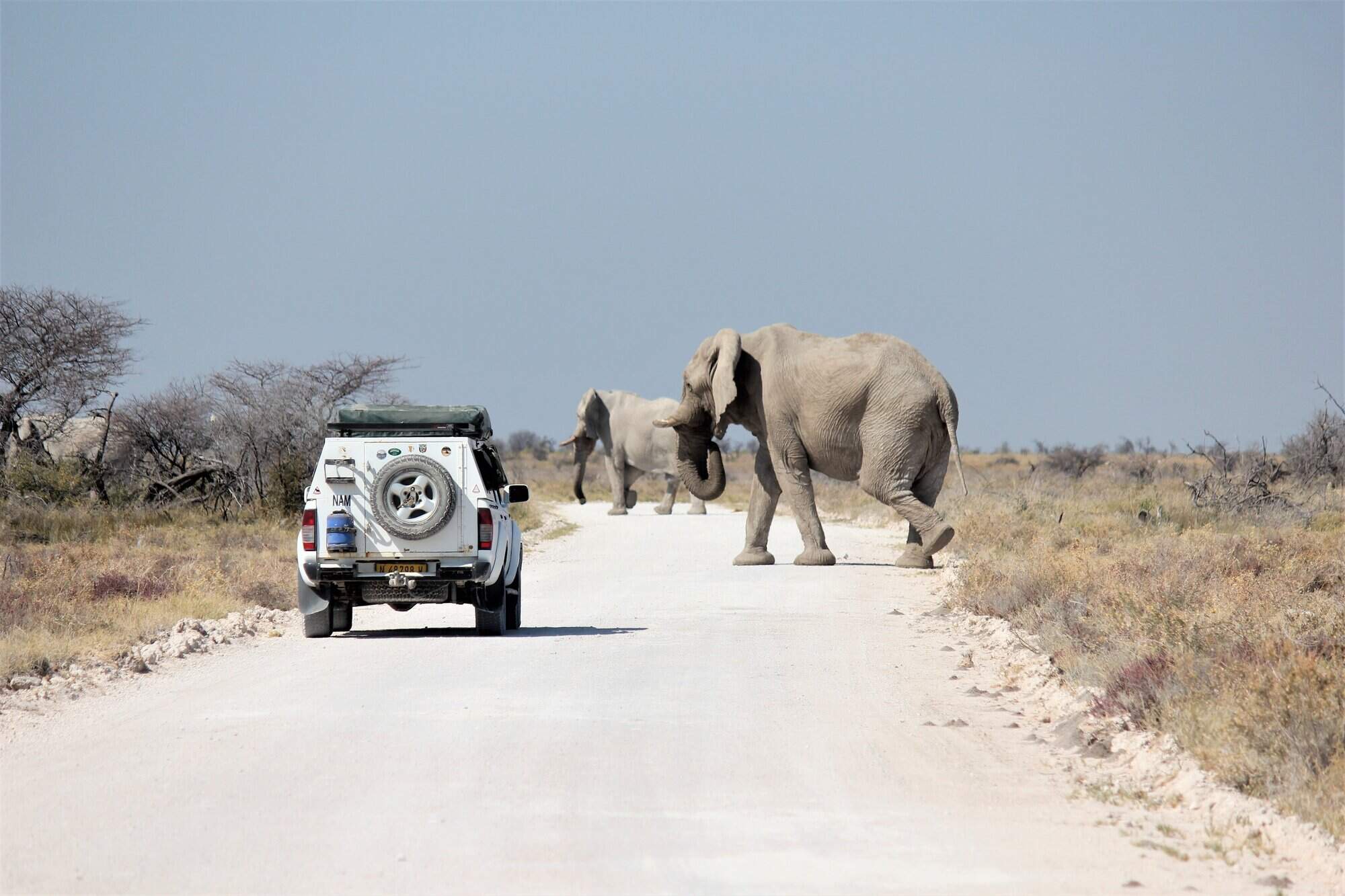
Okaukuejo Camp
Set within Etosha National Park, Okaukuejo Resort is a large camp with a productive, floodlit waterhole.
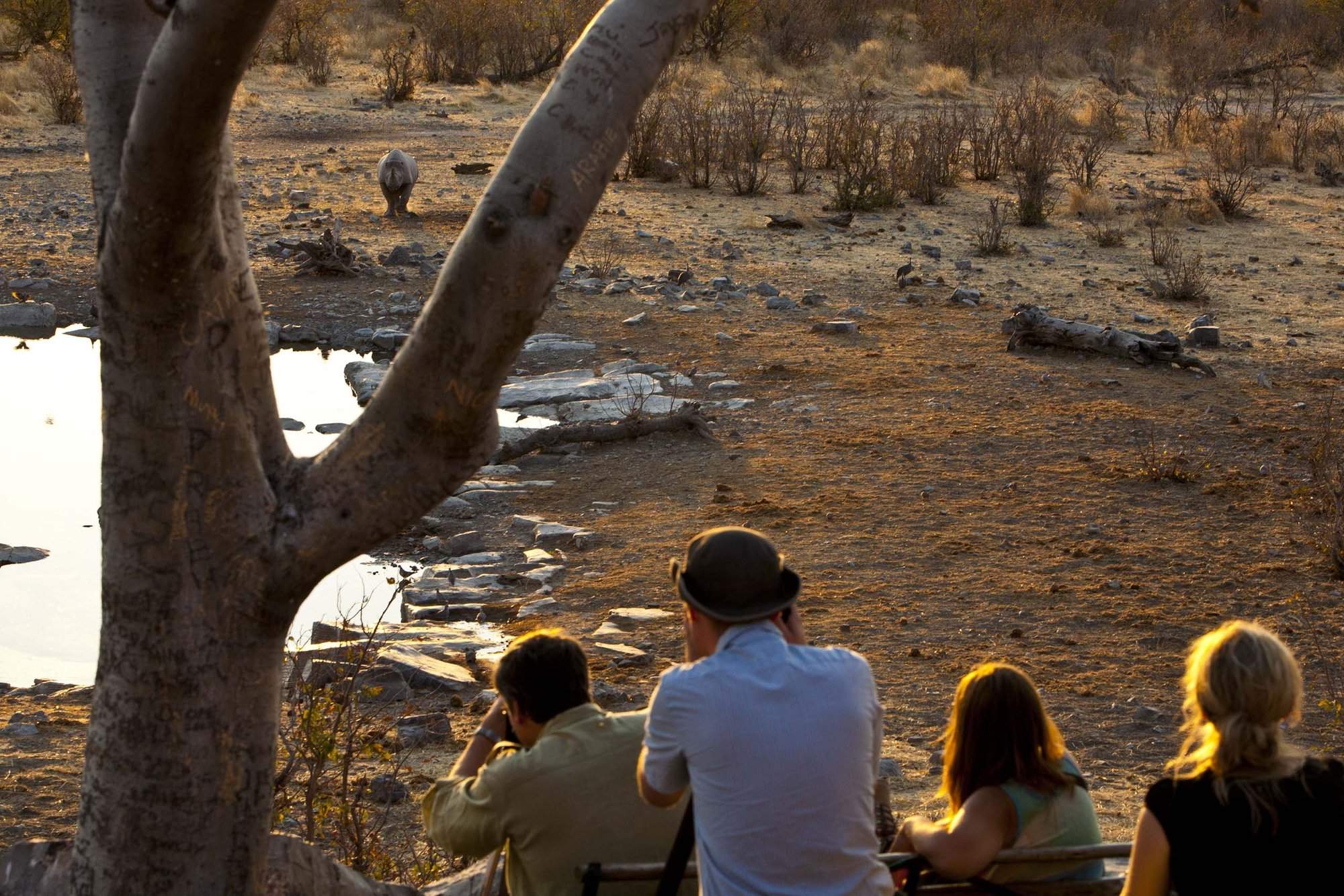
Halali Camp
The smallest of Etosha's erstwhile restcamps, overlooking its own floodlit waterhole, Halali has a superb location near the centre of Etosha Pan.
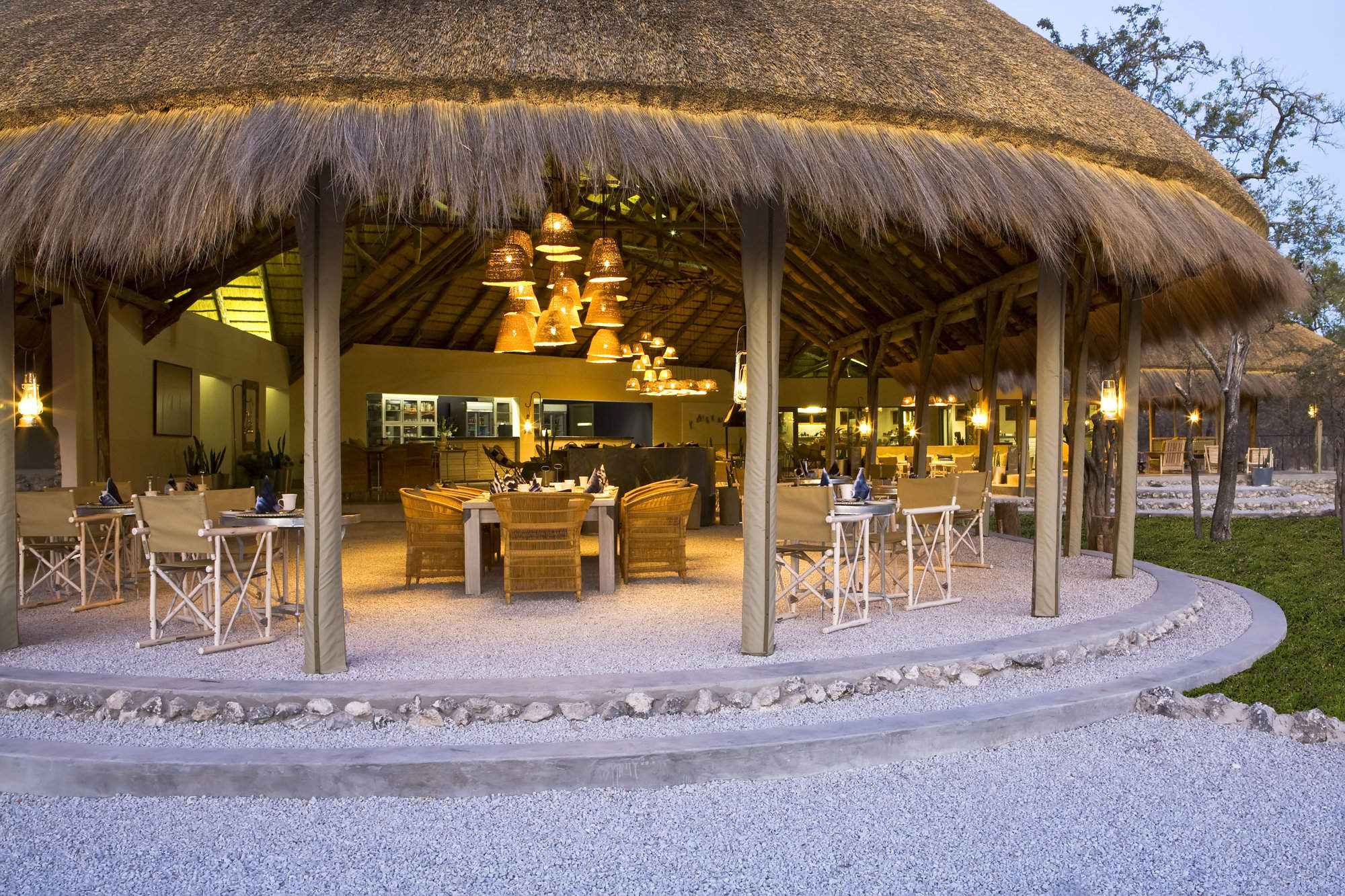
Mushara Bush Camp
The family-friendly Mushara Bush Camp offers great value and is an excellent base from which to explore Etosha National Park.
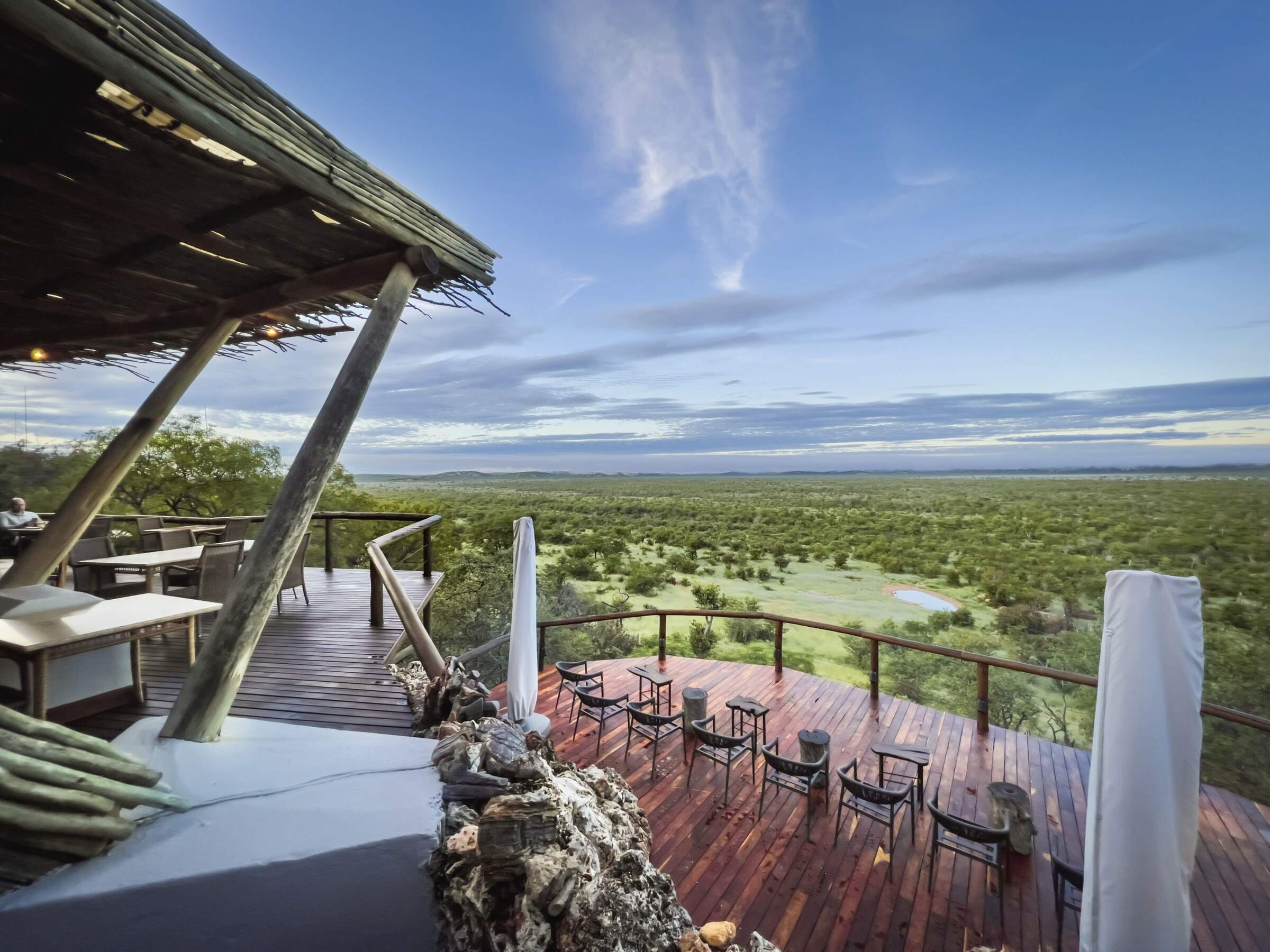
Ongava Lodge
With fantastic views over a private reserve bordering Etosha, the smart Ongava Lodge offers driving and walking safaris on the reserve, and guided drives in Etosha.
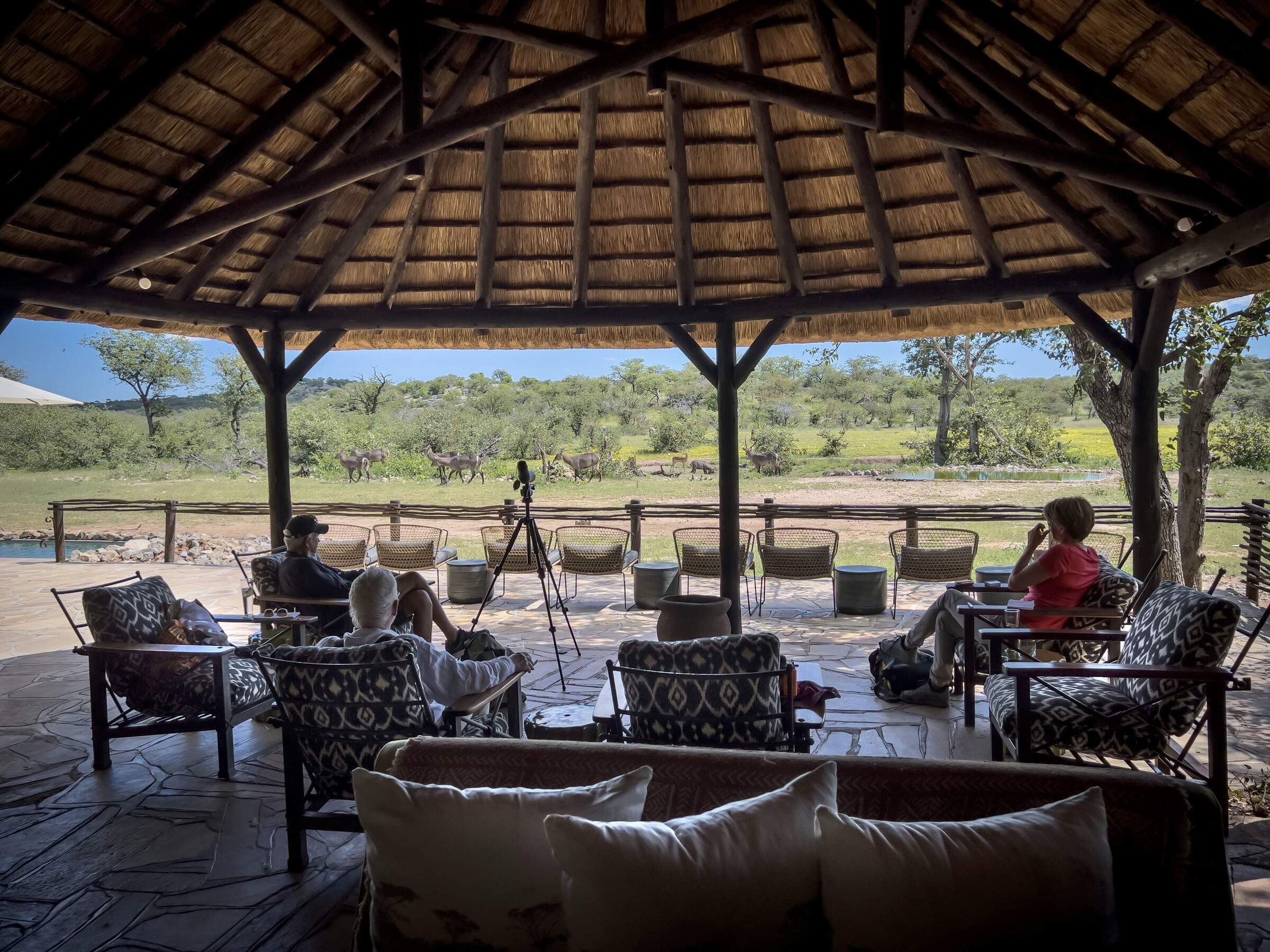
Ongava Tented Camp
Set around a waterhole on a private reserve, the small Ongava Tented Camp combines understated comfort with activities that include walks and night drives.
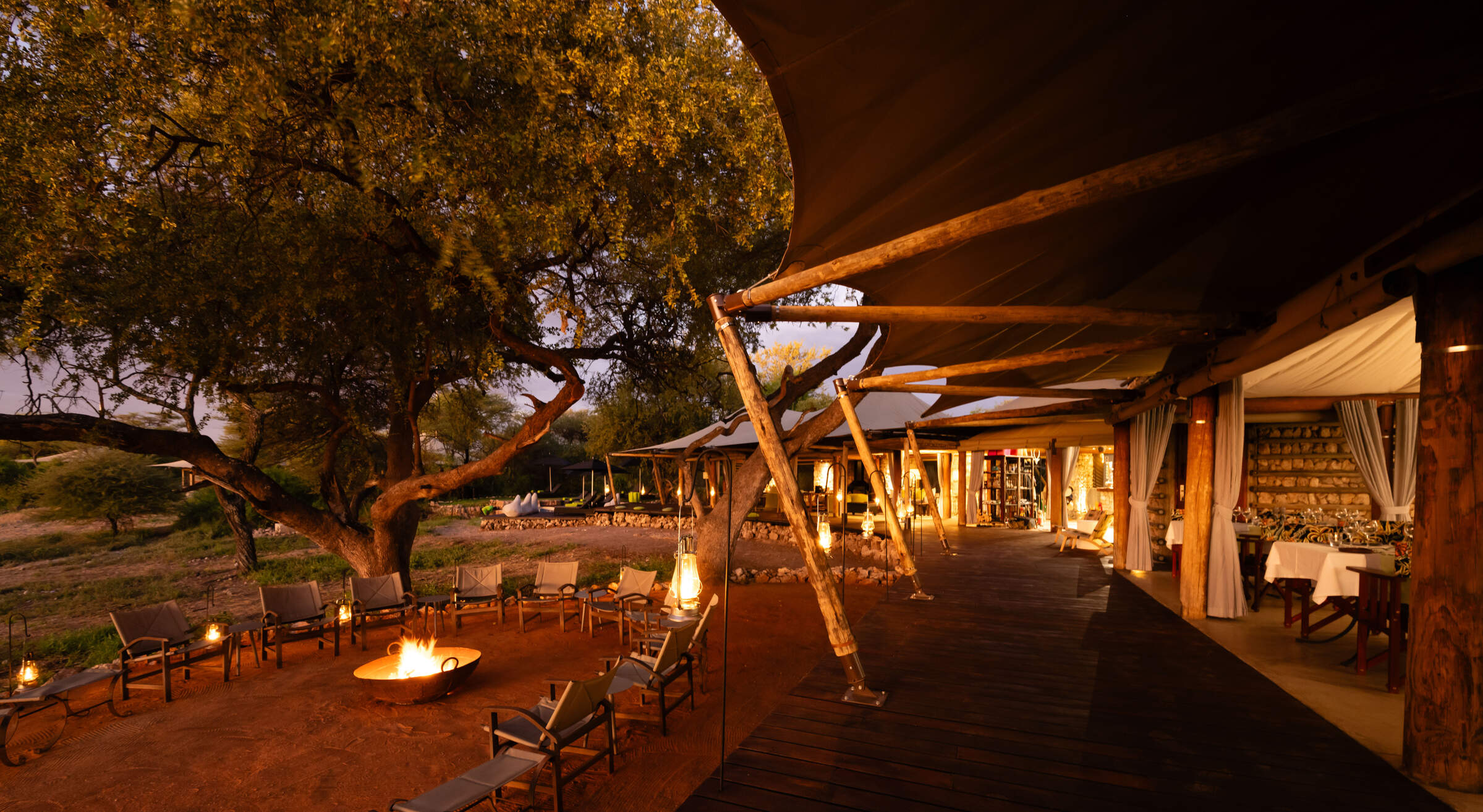
Onguma Tented Camp
Onguma Tented Camp is a lovely, little tented camp which centres around an attractive waterhole a short drive from the Von Lindequist Gate to eastern Etosha.
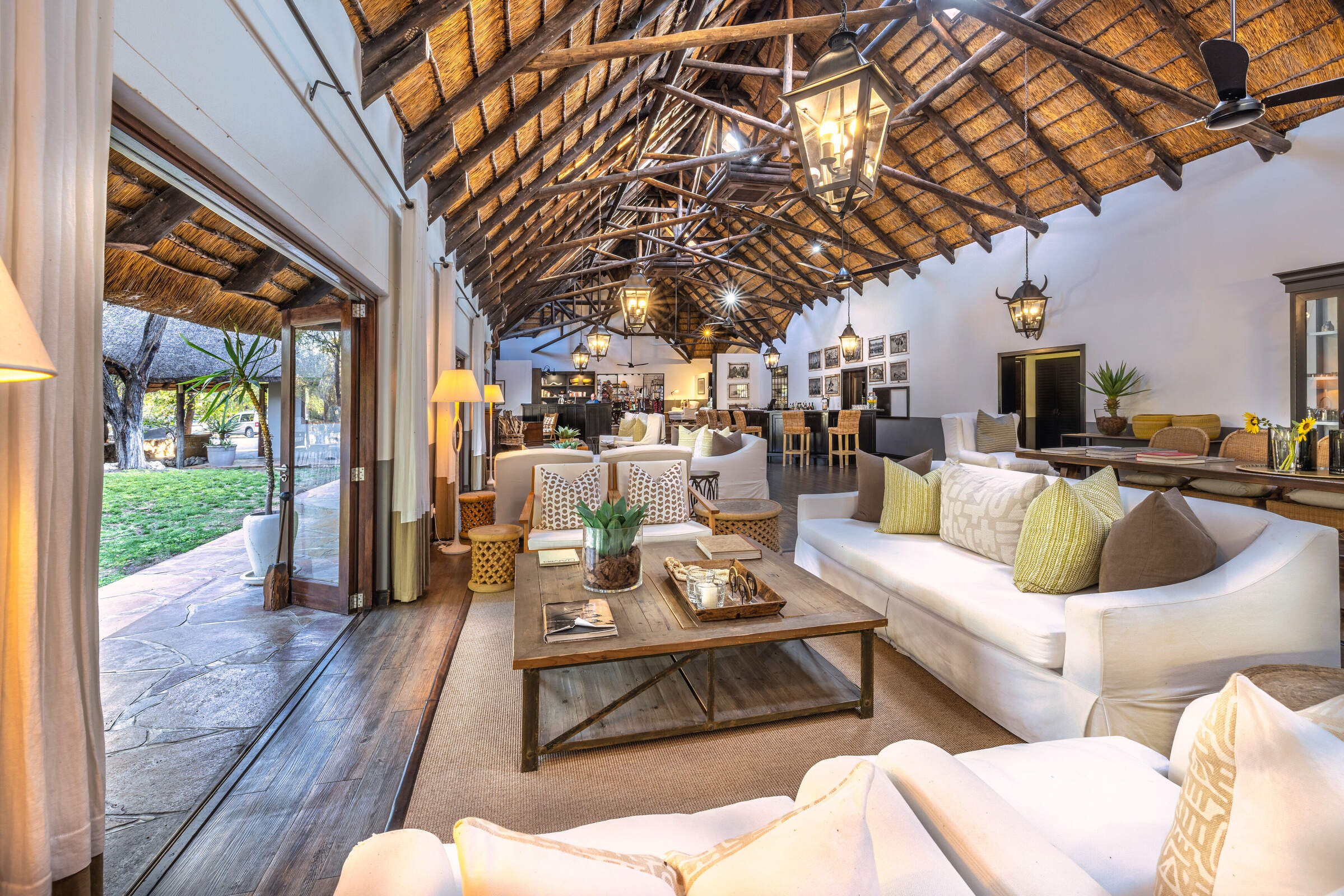
Mushara Lodge
Close to the eastern entrance to Etosha, the comfortable Mushara Lodge is well-placed for exploring the park in your own vehicle or on a guided drive.

Onguma Bush Camp
For great wildlife viewing without breaking the bank, the affordable and understated luxury of Onguma Bush Camp could be perfect.
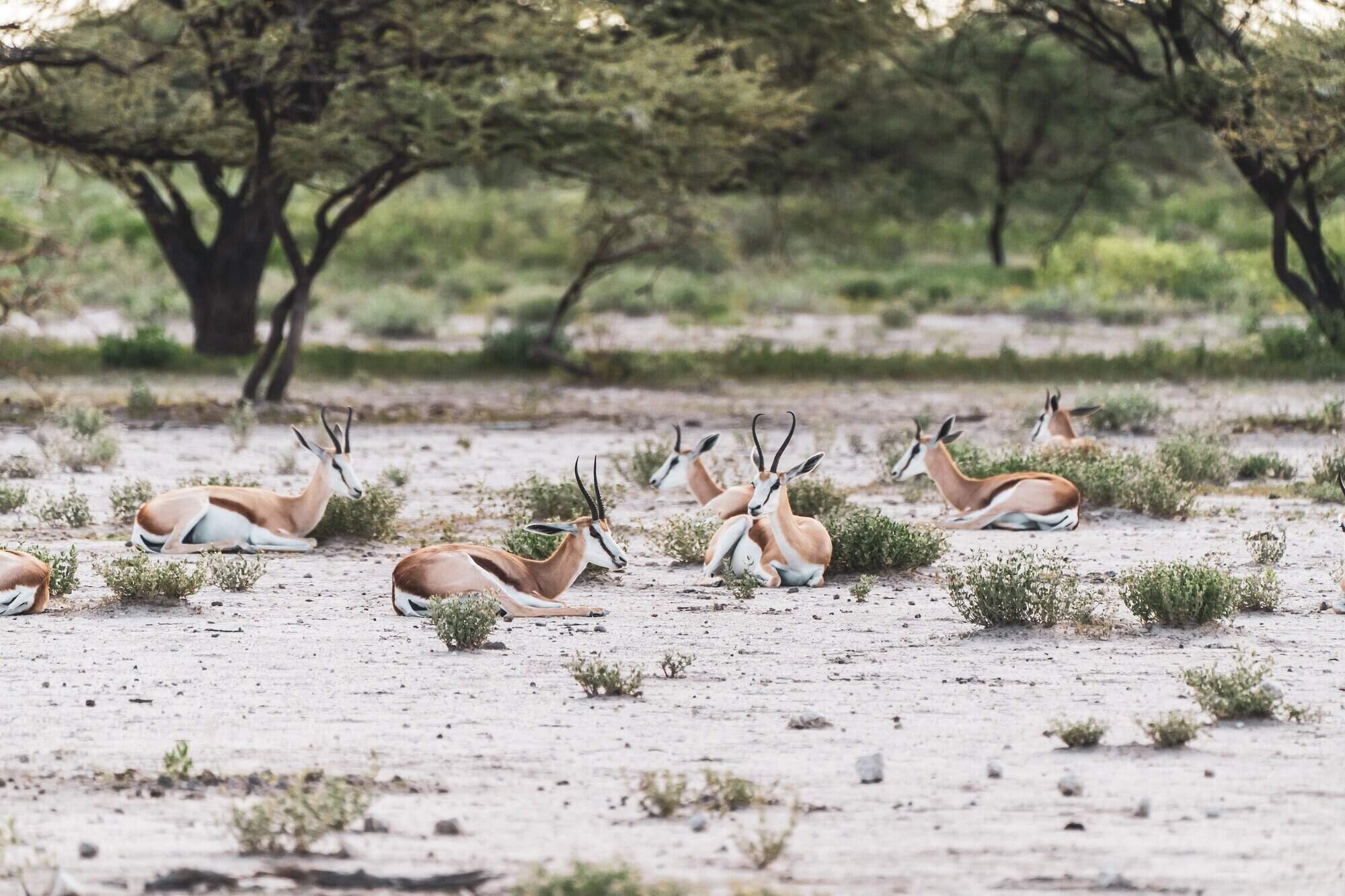
Namutoni Camp
Centred on an old fort, the government run Namutoni Camp is located just inside Etosha National Park, close to Fisher's Pan.
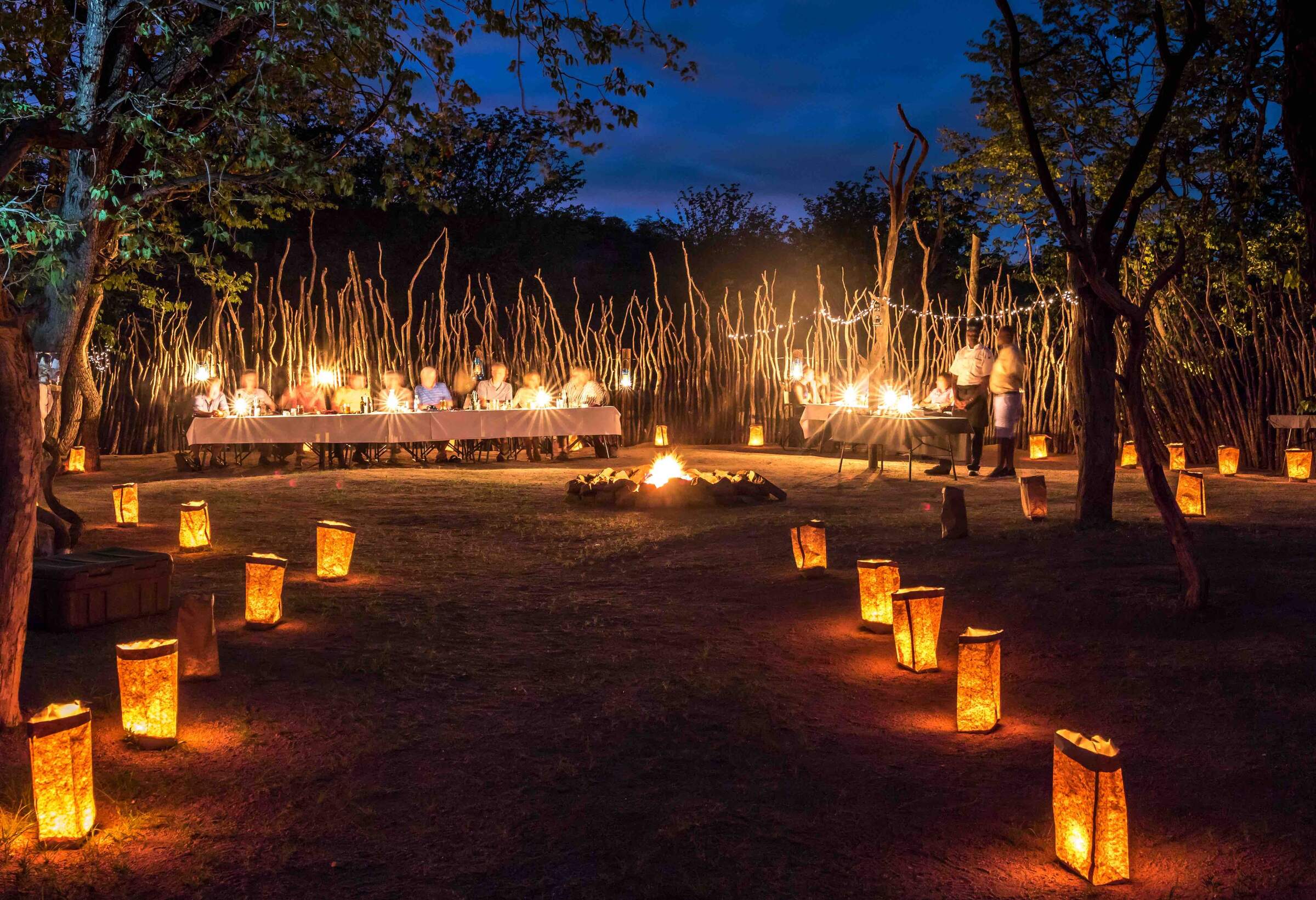
Hobatere Lodge
To the west of Etosha National Park, on the edge of Damaraland, Hobatere Lodge offers good game-viewing on its own reserve.
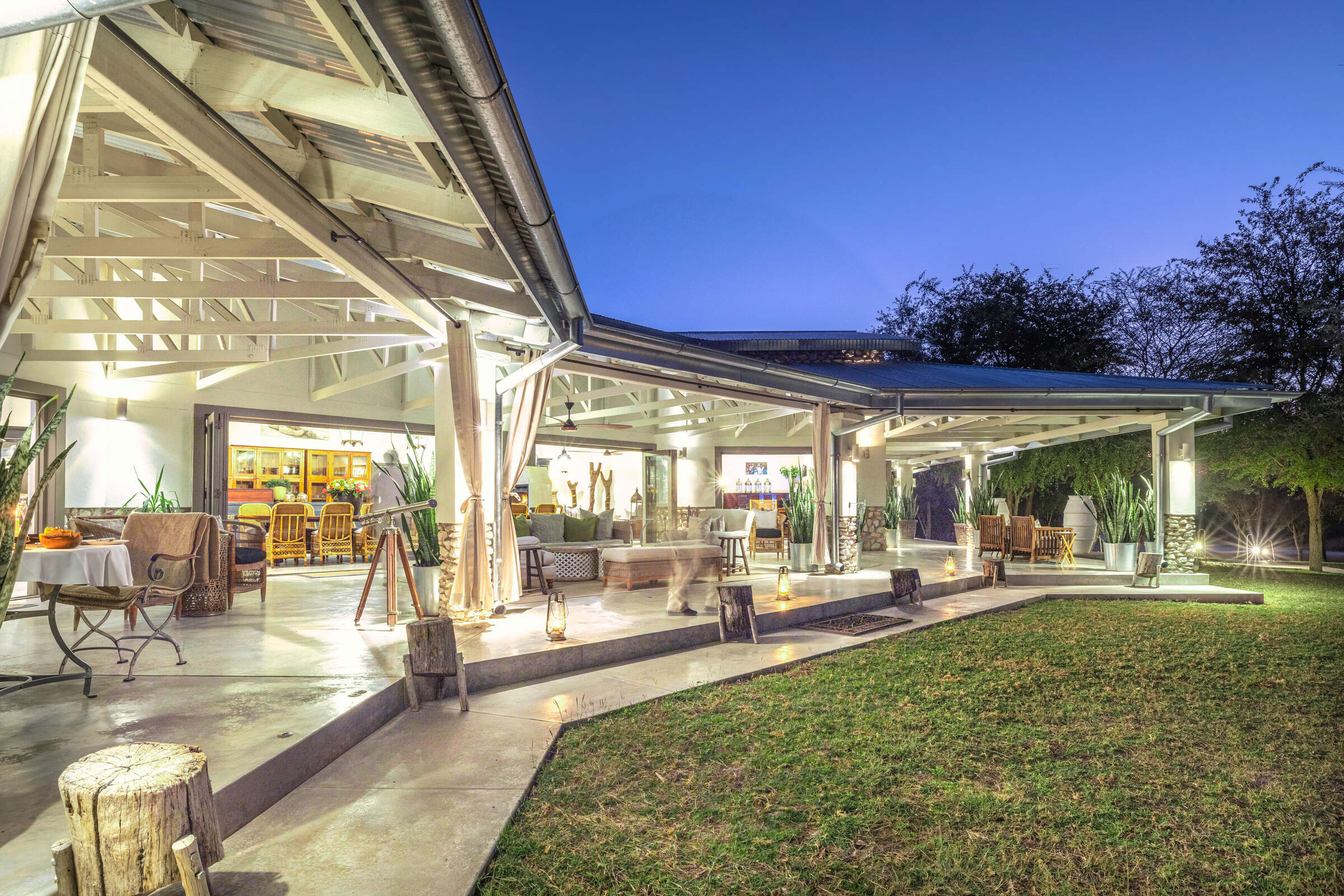
Mushara Outpost
Intimate and luxurious, Mushara Outpost is well-placed on a private reserve to explore nearby Etosha National Park on your own or on a guided drive.
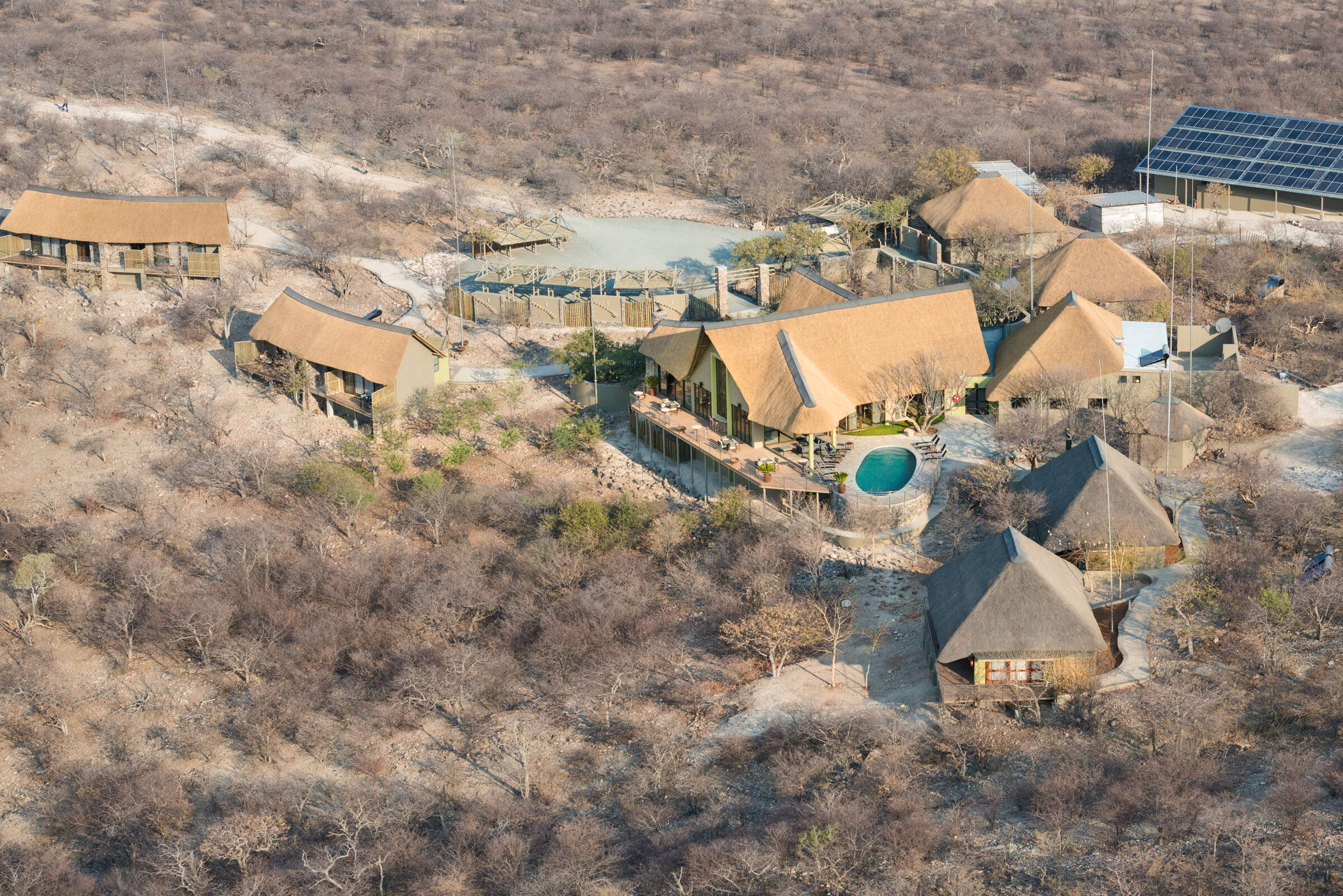
Safarihoek Lodge
At the heart of the private Etosha Heights Reserve, Safarihoek Lodge offers comfortable accommodation and excellent game-viewing.
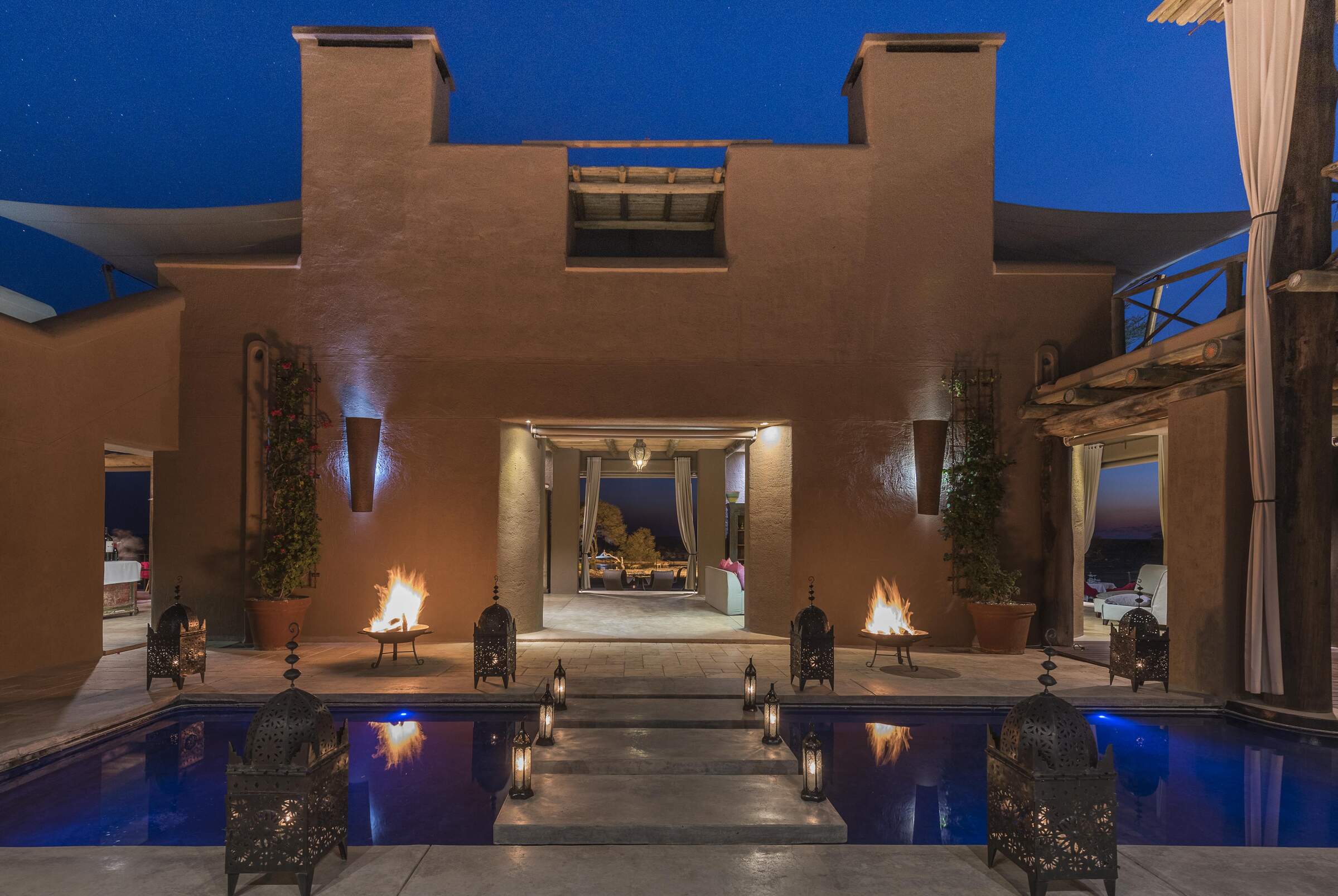
Onguma The Fort
The Fort is the jewel in the crown of the Onguma lodges, and arguably the whole of eastern Etosha.
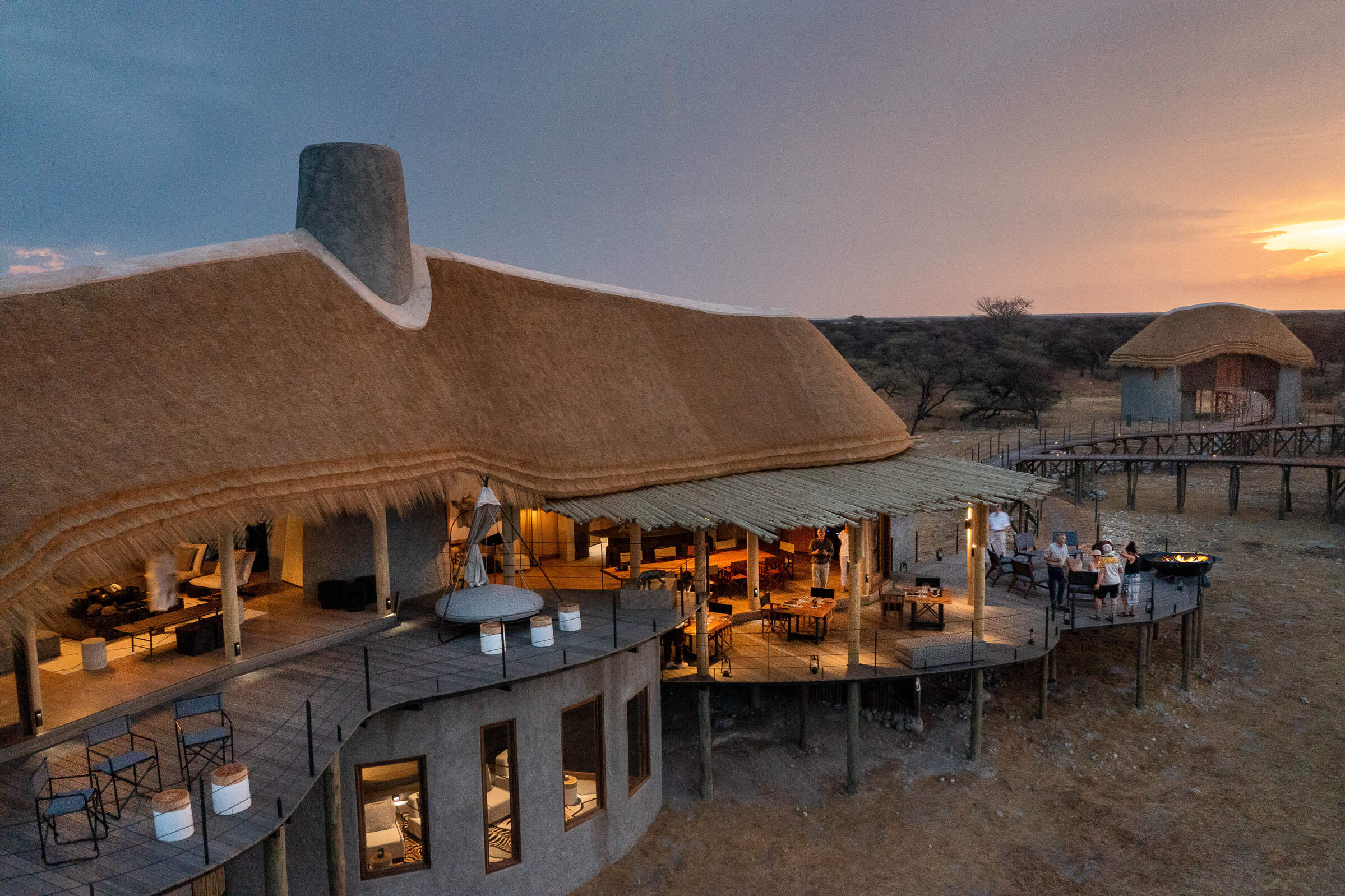
Onguma Camp Kala
For a bird’s eye view across African bush, the stilted rooms at Onguma Camp Kala are truly special.
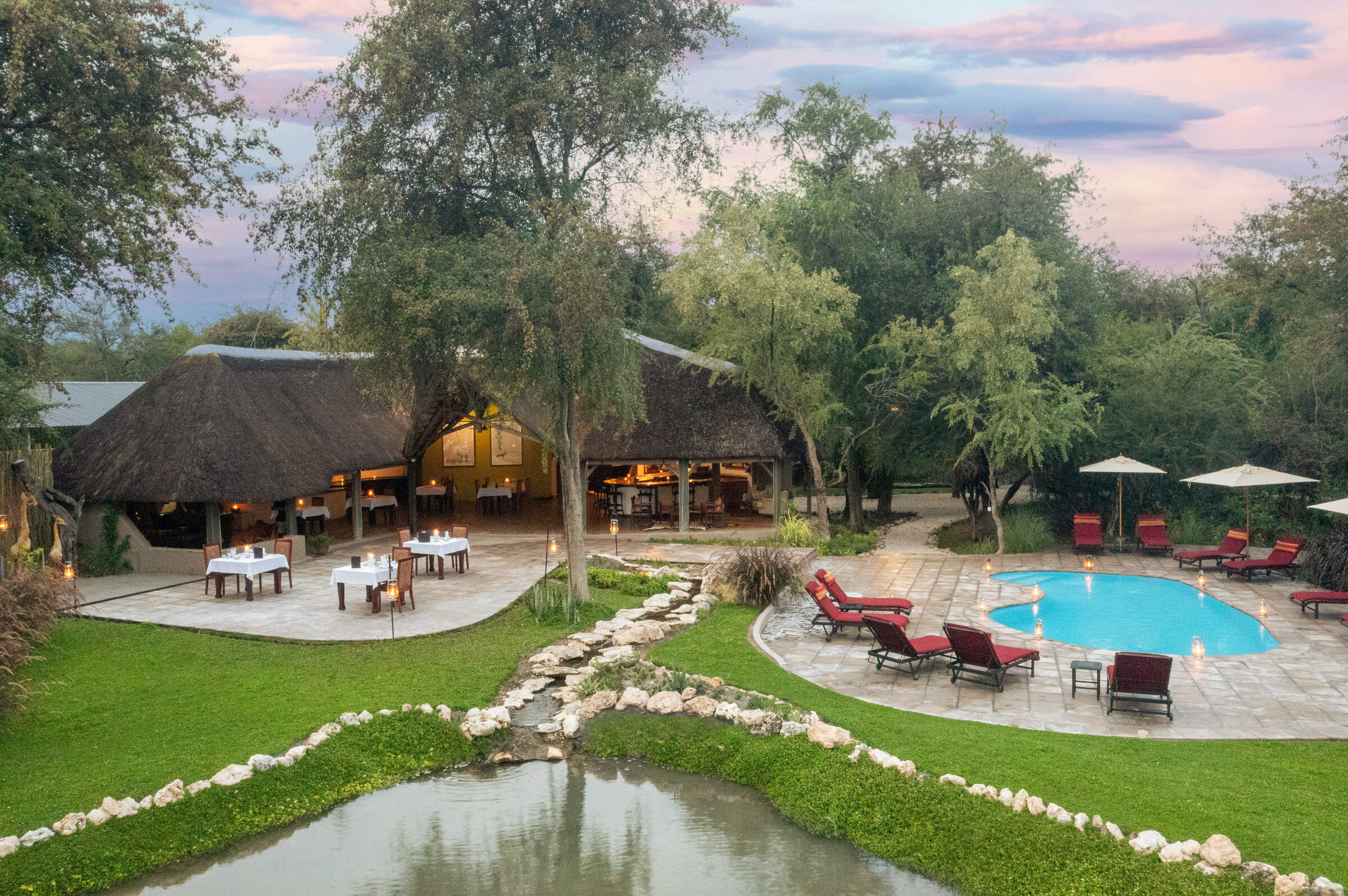
Onguma Forest Camp
From its woodland setting on the Onguma Reserve, Forest Camp is within easy striking distance of Namibia’s flagship national park.
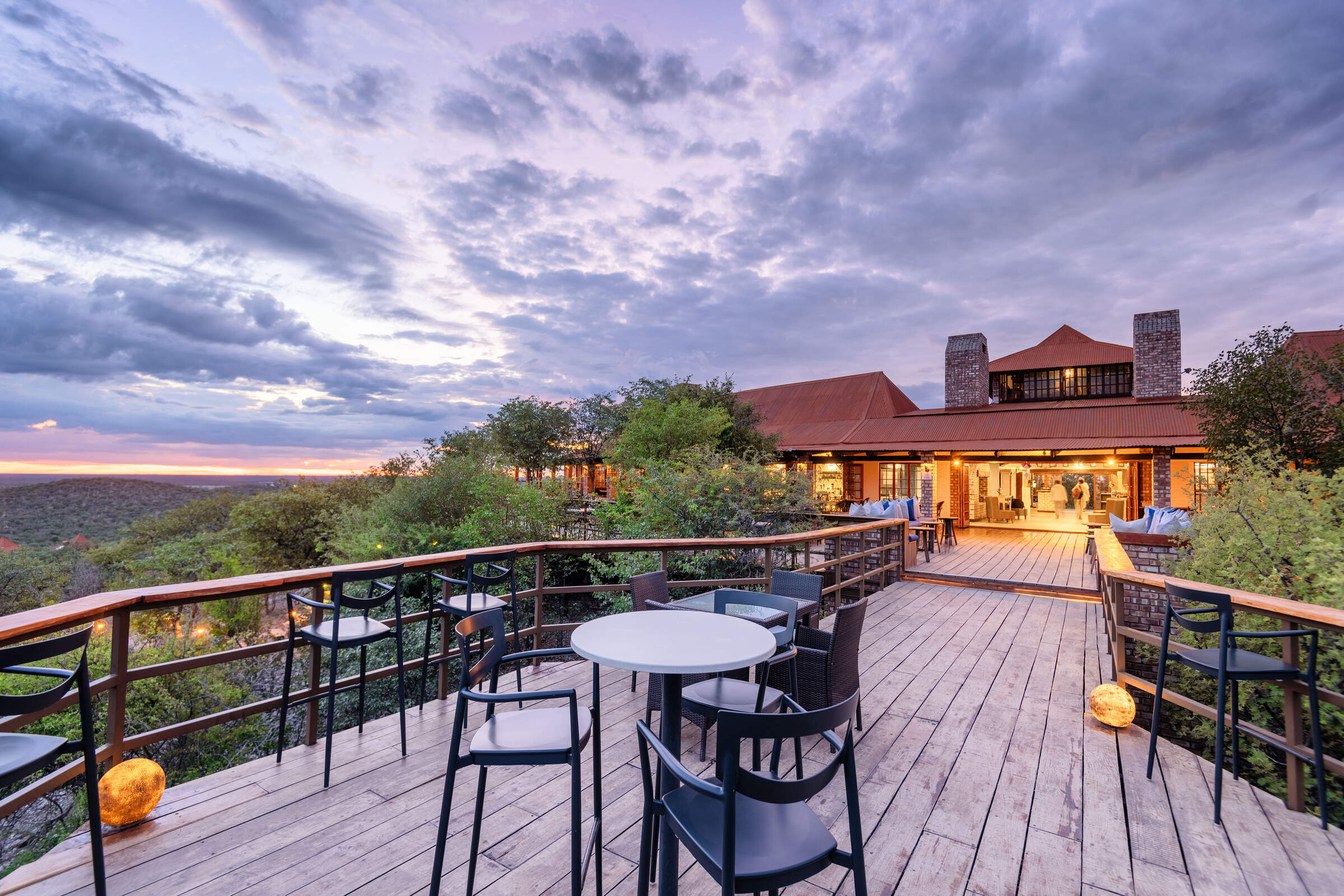
Etosha Safari Lodge
A short drive from Etosha National Park's southern entrance, Etosha Safari Lodge is a convenient base from which to explore the park.
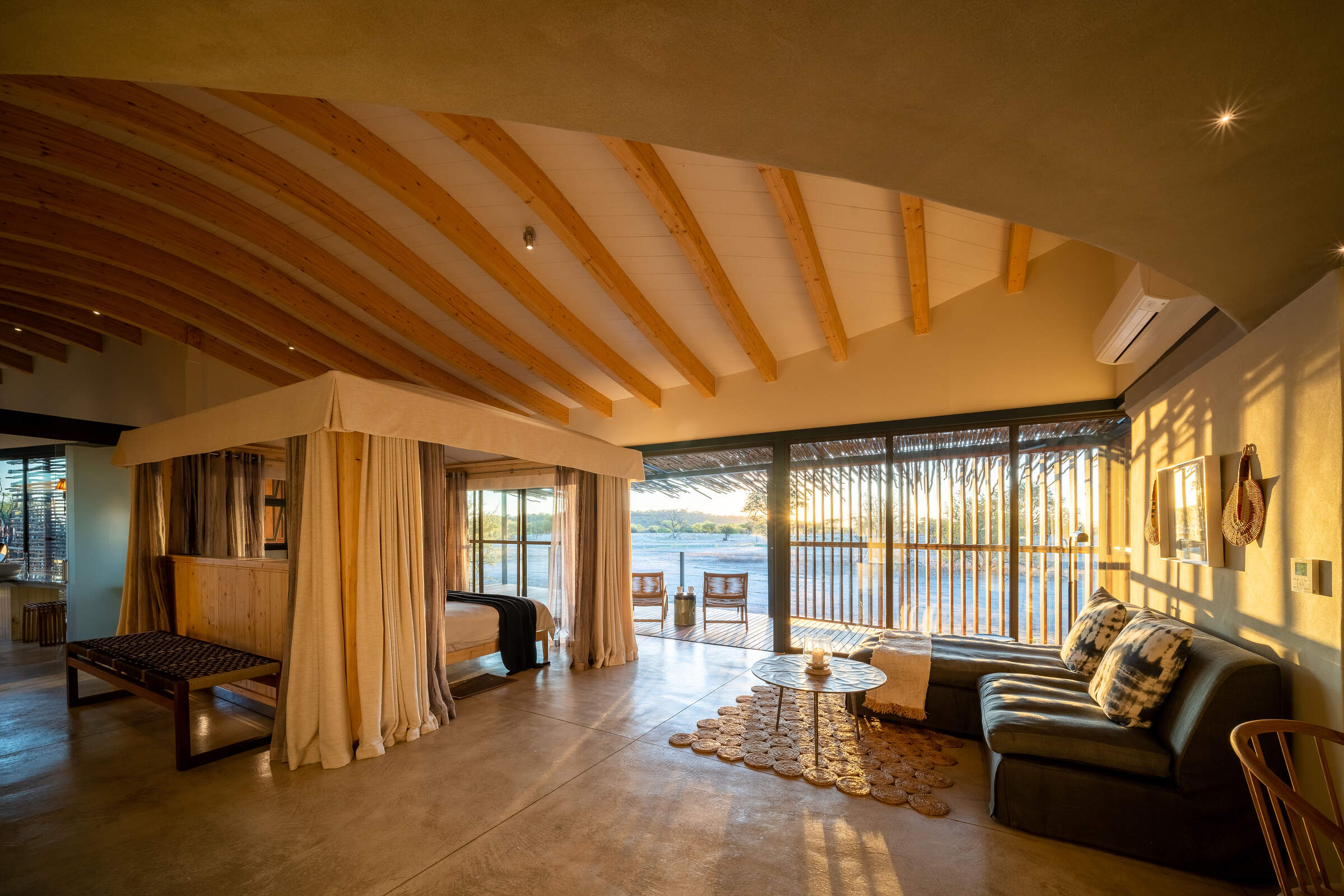
Andersson's at Ongava
With game drives on both its private reserve and in Etosha, Andersson's at Ongava also offers access to the Ongava Research Centre.
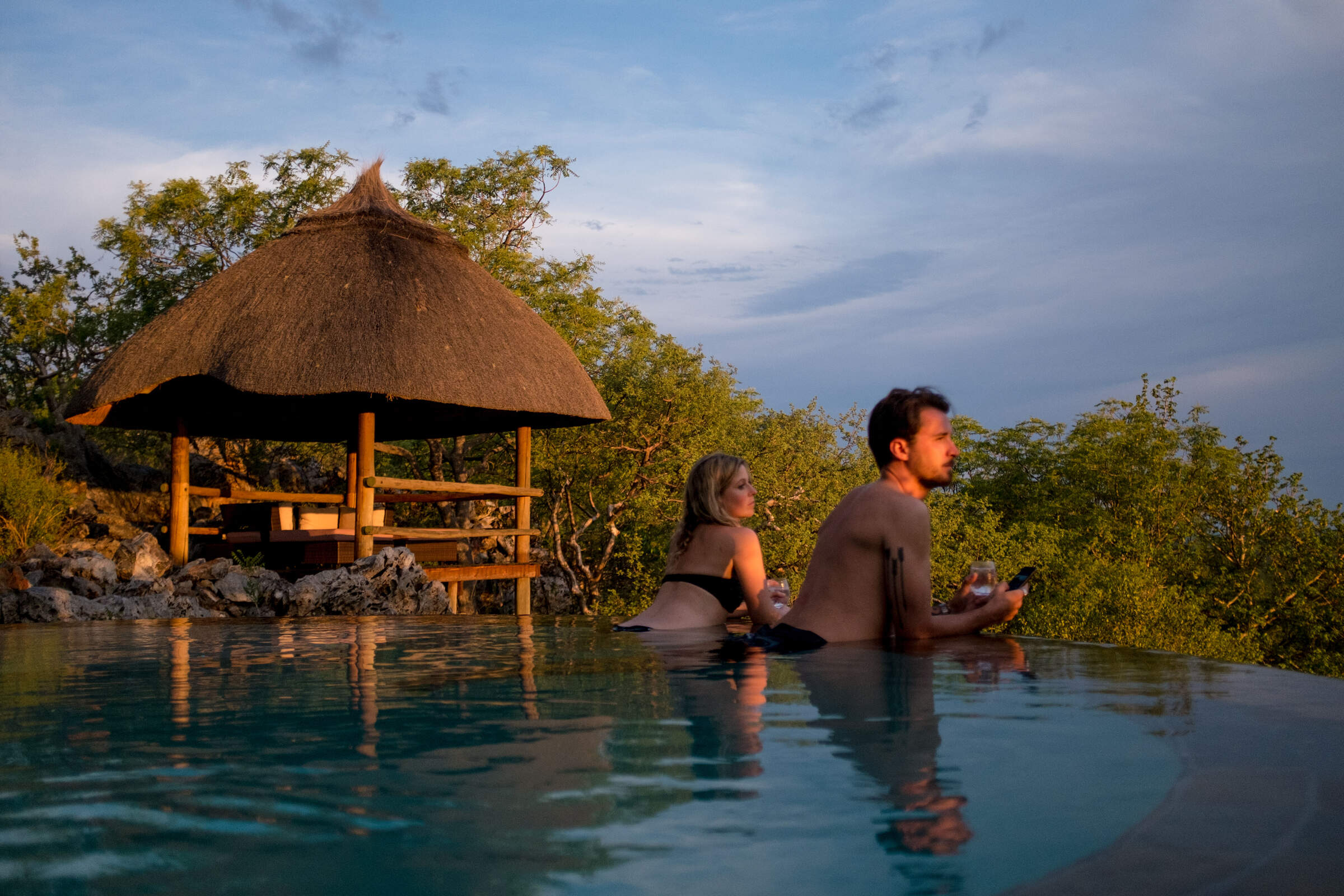
Little Ongava
The beautifully located and luxurious Little Ongava is a stunning place to stay in order to explore Etosha National Park and the private Ongava Reserve.
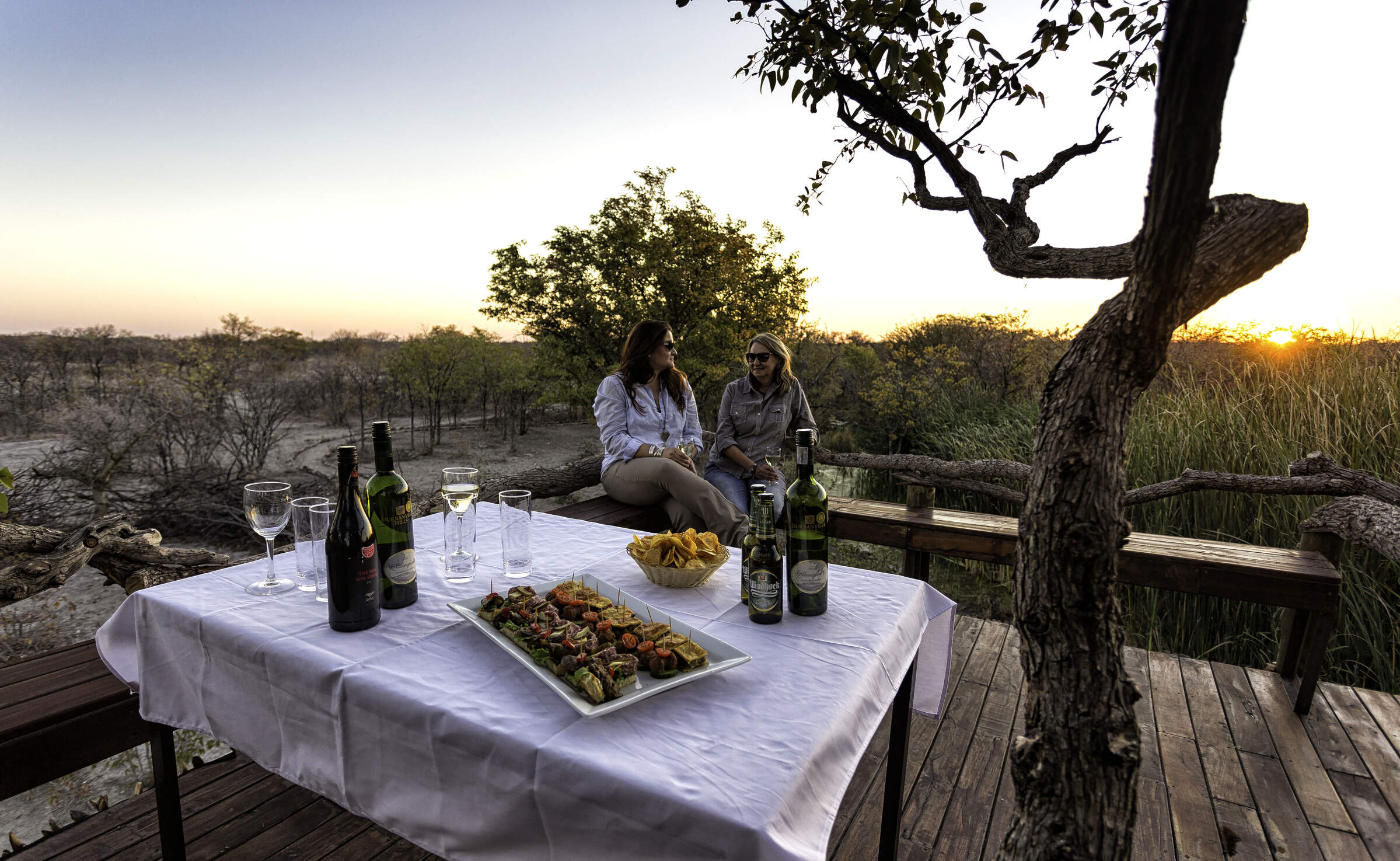
Taleni Etosha Village
Only 4km from Etosha's southern entrance, Taleni Etosha Village is an affordable base from which to explore the park.
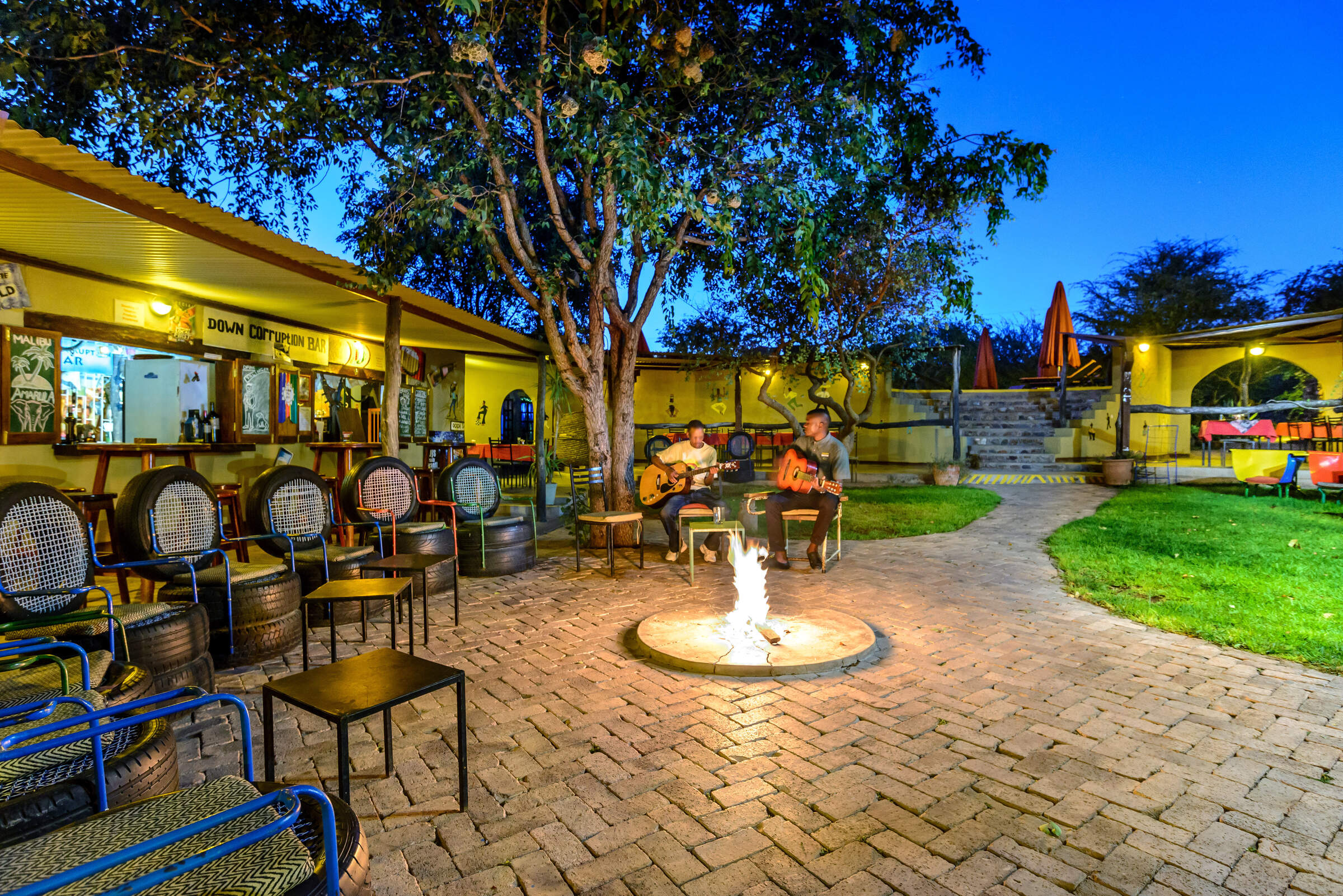
Etosha Safari Camp
Funky, low-key and very original, Etosha Safari Camp is well placed for visiting Etosha National Park on a self-drive or guided safari.
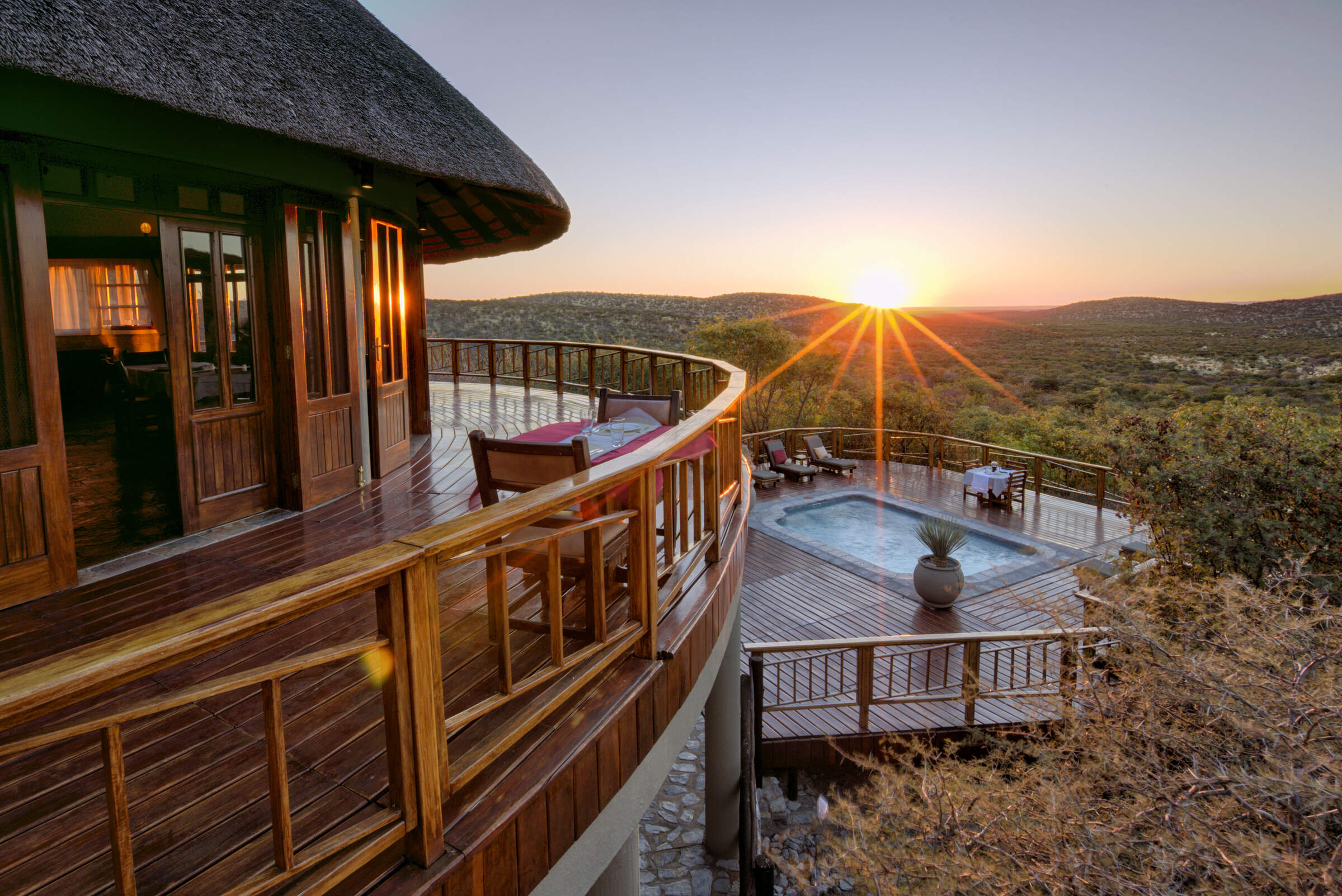
Mountain Lodge
In the heart of the private Etosha Heights Reserve, the family-friendly Mountain Lodge offers game drives and bush walks within an exclusive environment.
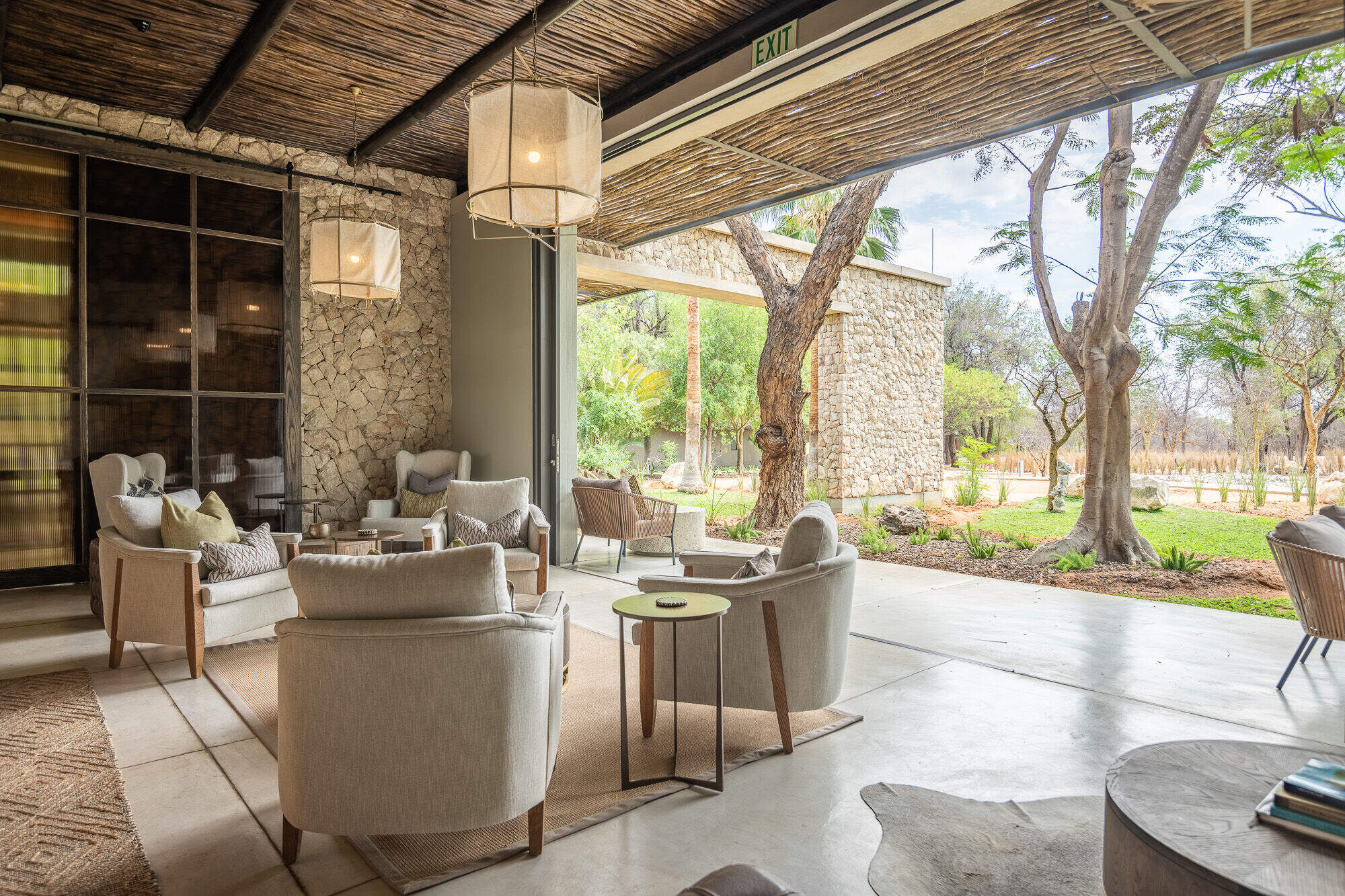
Mokuti Etosha Lodge
With 106 rooms, child-friendly Mokuti Etosha Lodge is more like a hotel than a lodge. Facilities to include a gym, spa, tennis courts and even a snake park.
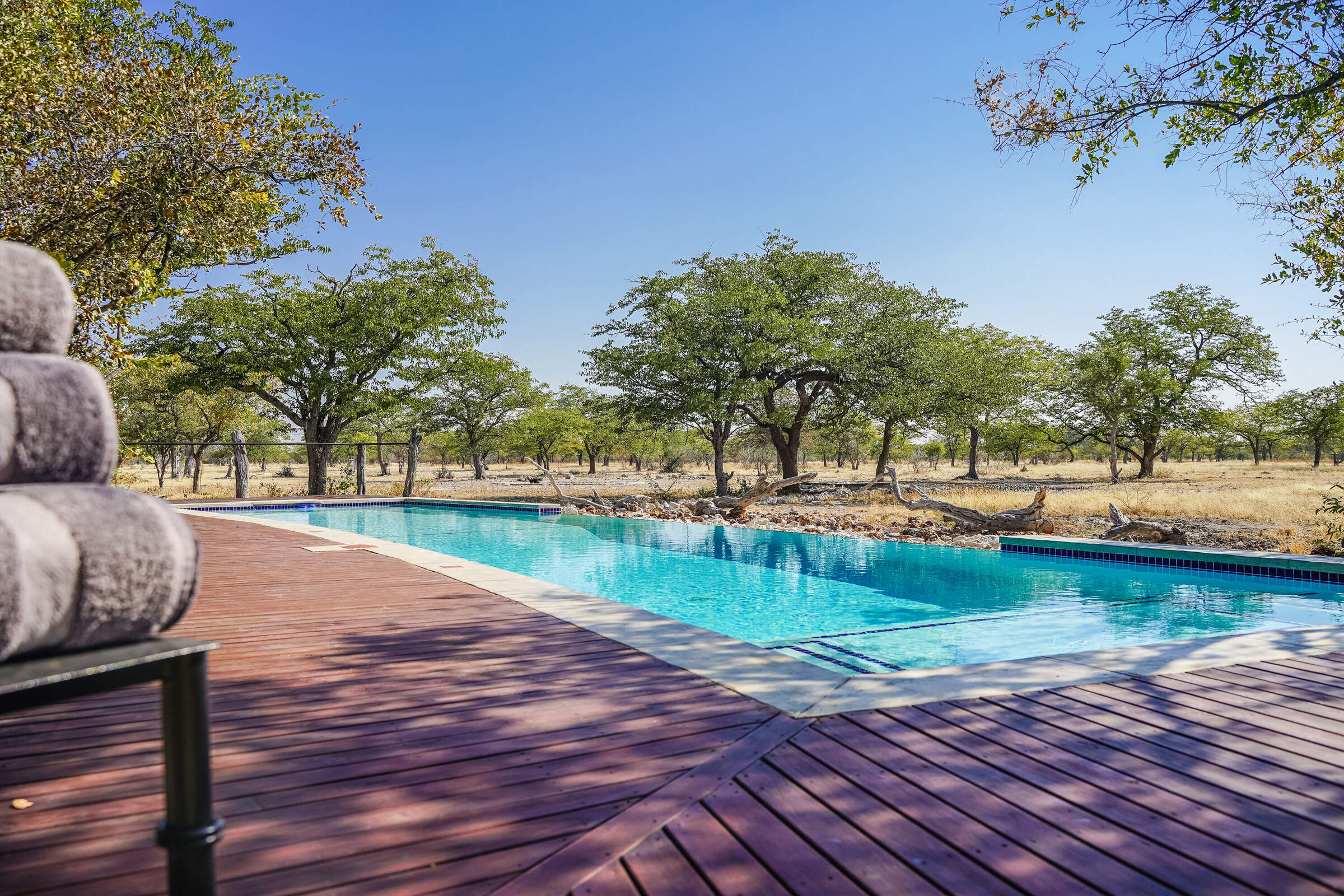
Etosha Oberland Lodge
A short drive from Etosha National Park's southern entrance, Etosha Oberland Lodge is a very comfortable base from which to explore the park, with excellent food.
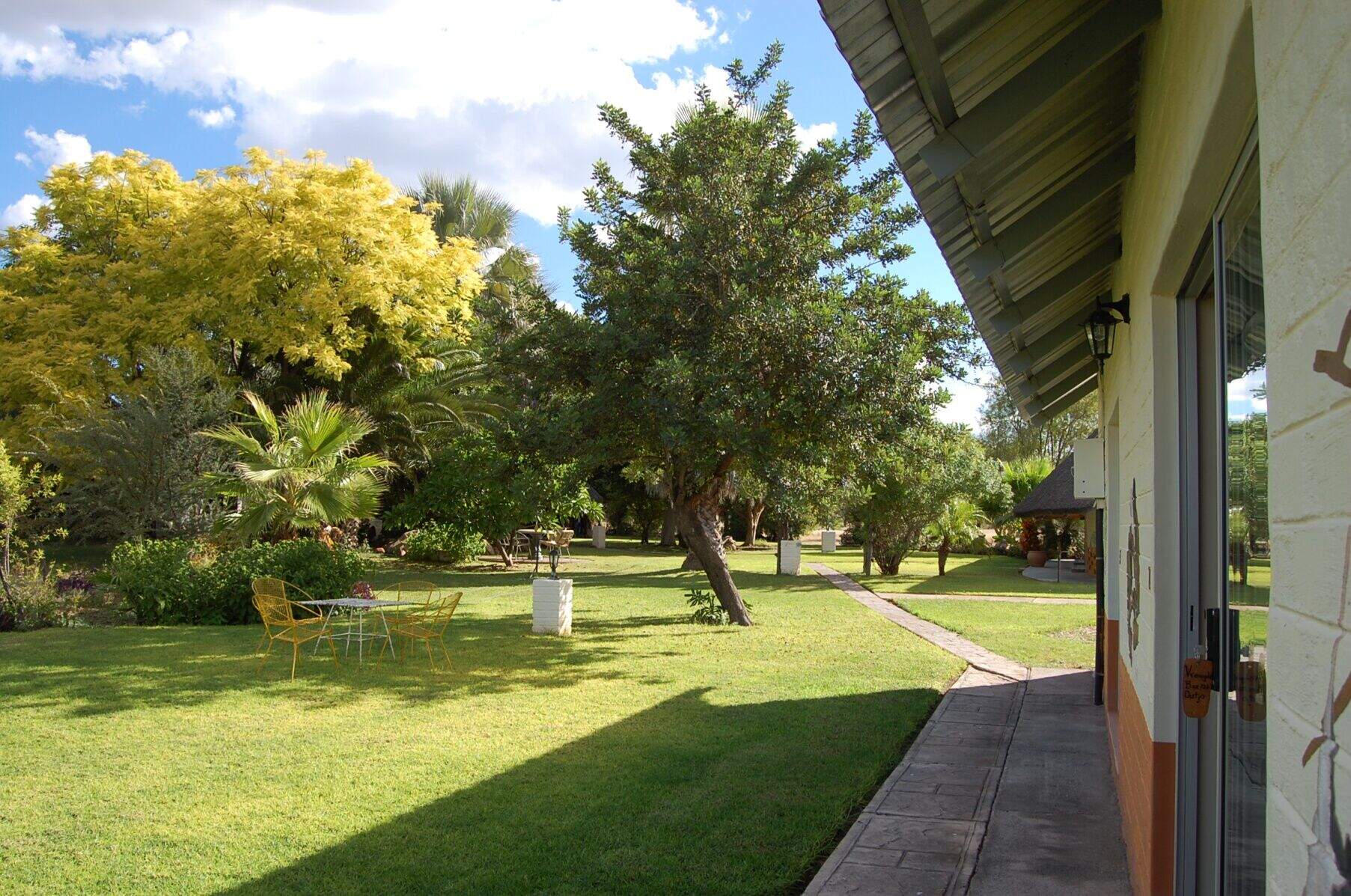
Vreugde Guest Farm
Vreugde Guest Farm is a delightful owner-run and working sheep farm where you can expect a warm welcome and charming hospitality.
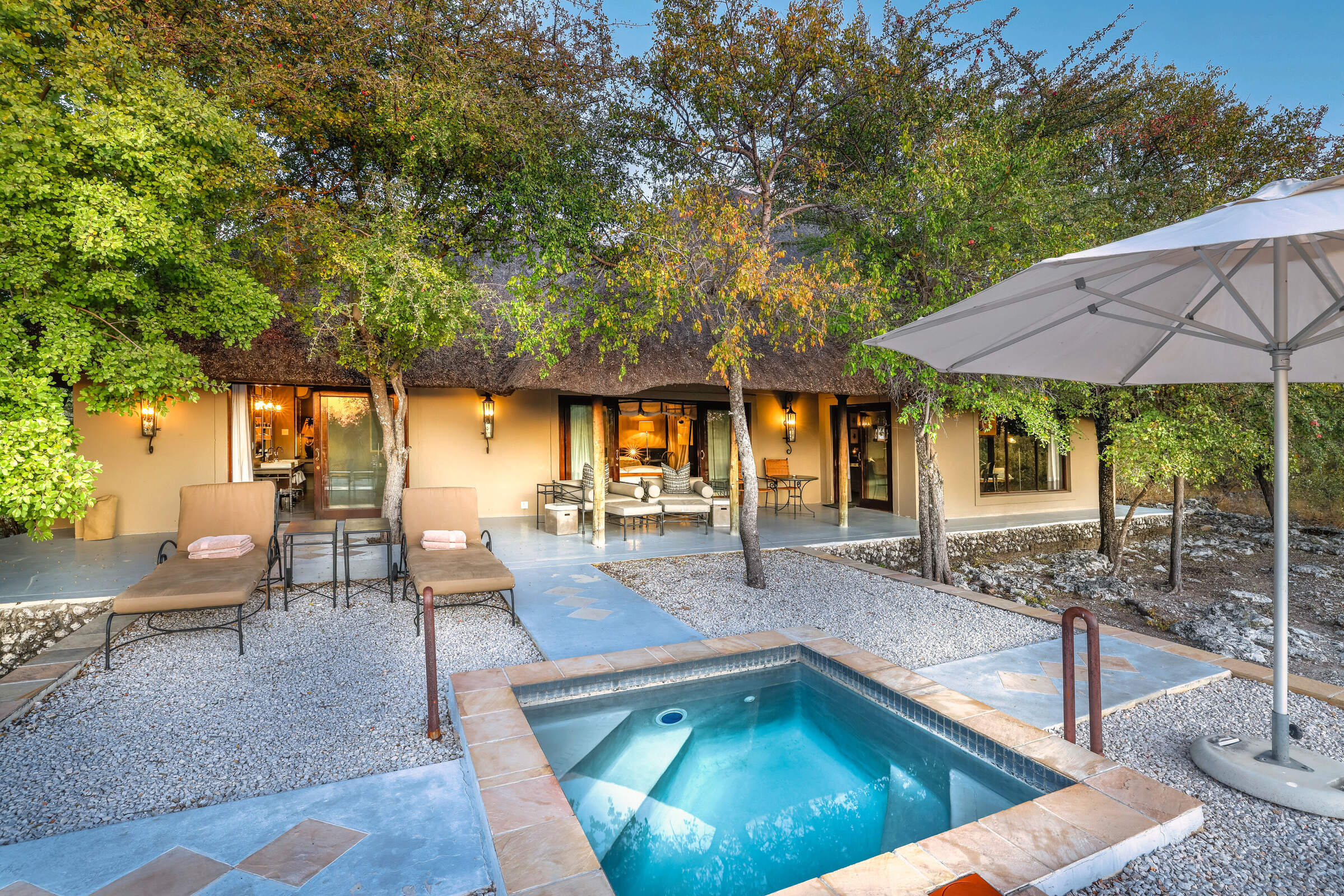
Villa Mushara
Offering luxury on a peaceful private reserve close to Etosha, Villa Mushara is a great choice for honeymooners & those wishing to indulge themselves.
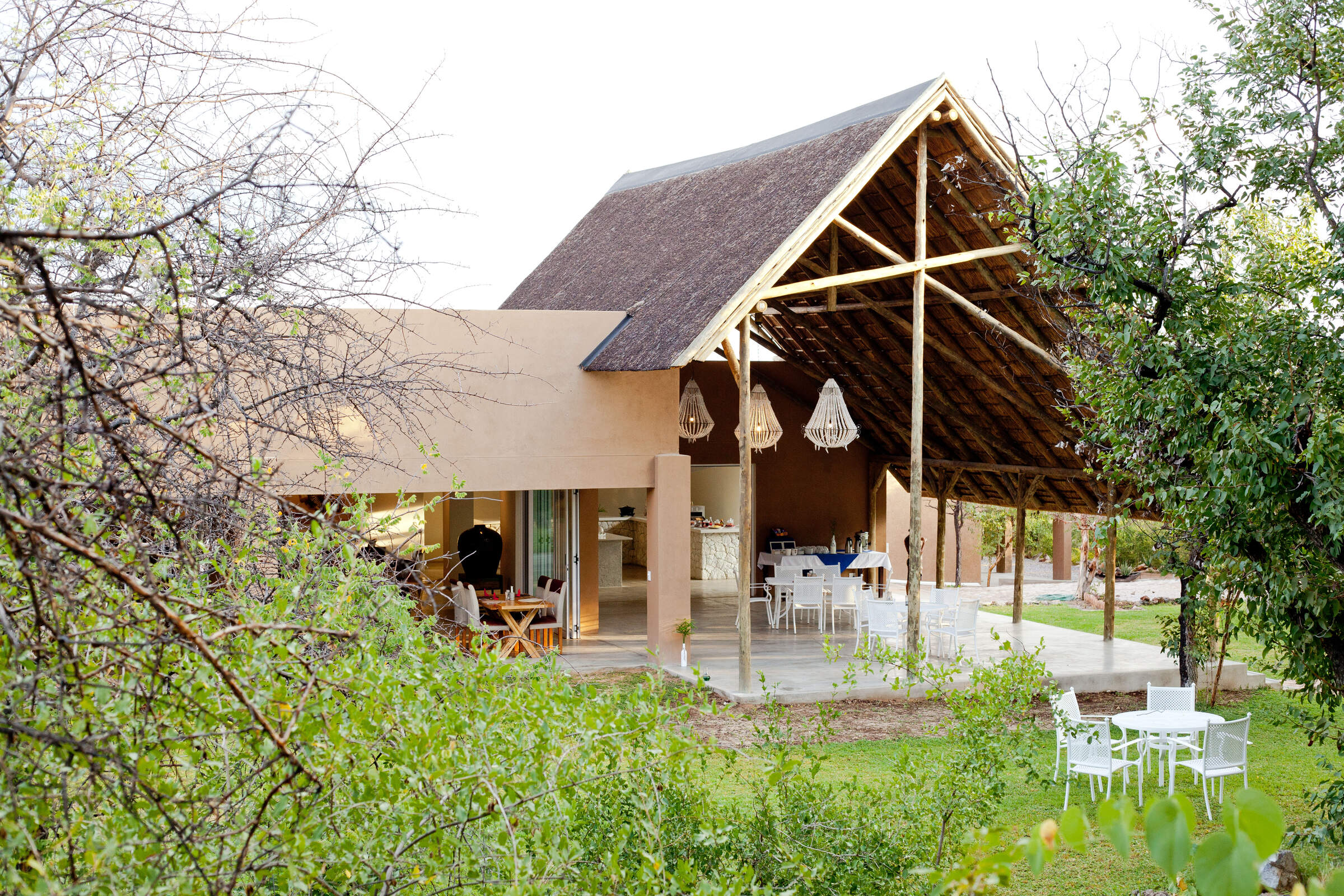
Toshari Lodge
Smart and professionally run, the hotel-style Toshari Lodge is well-placed for self-driving in Etosha National Park.
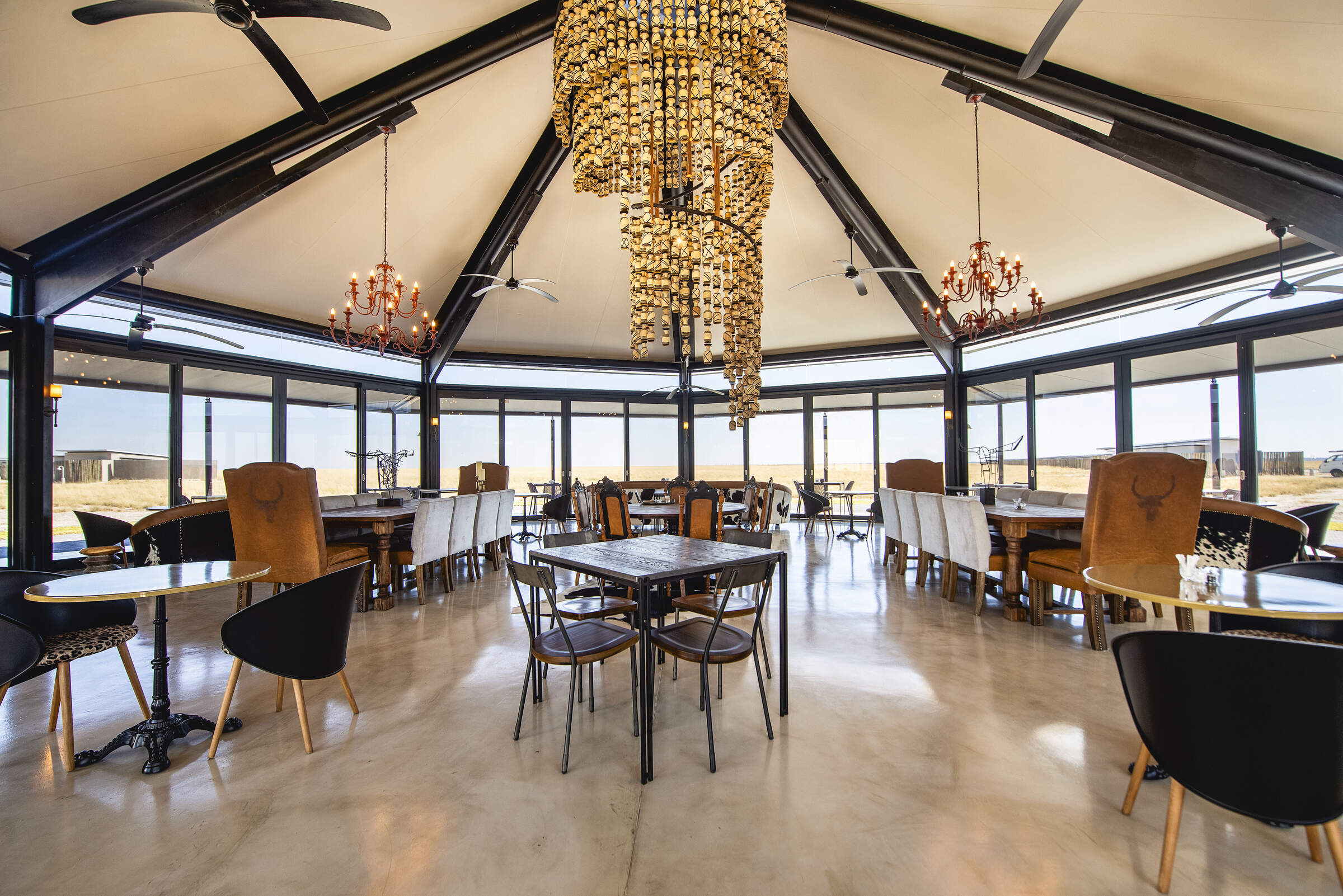
Etosha King Nehale
A short drive from the national park's northern entrance, Etosha King Nehale Lodge is an interesting and comfortable base from which to explore the park.
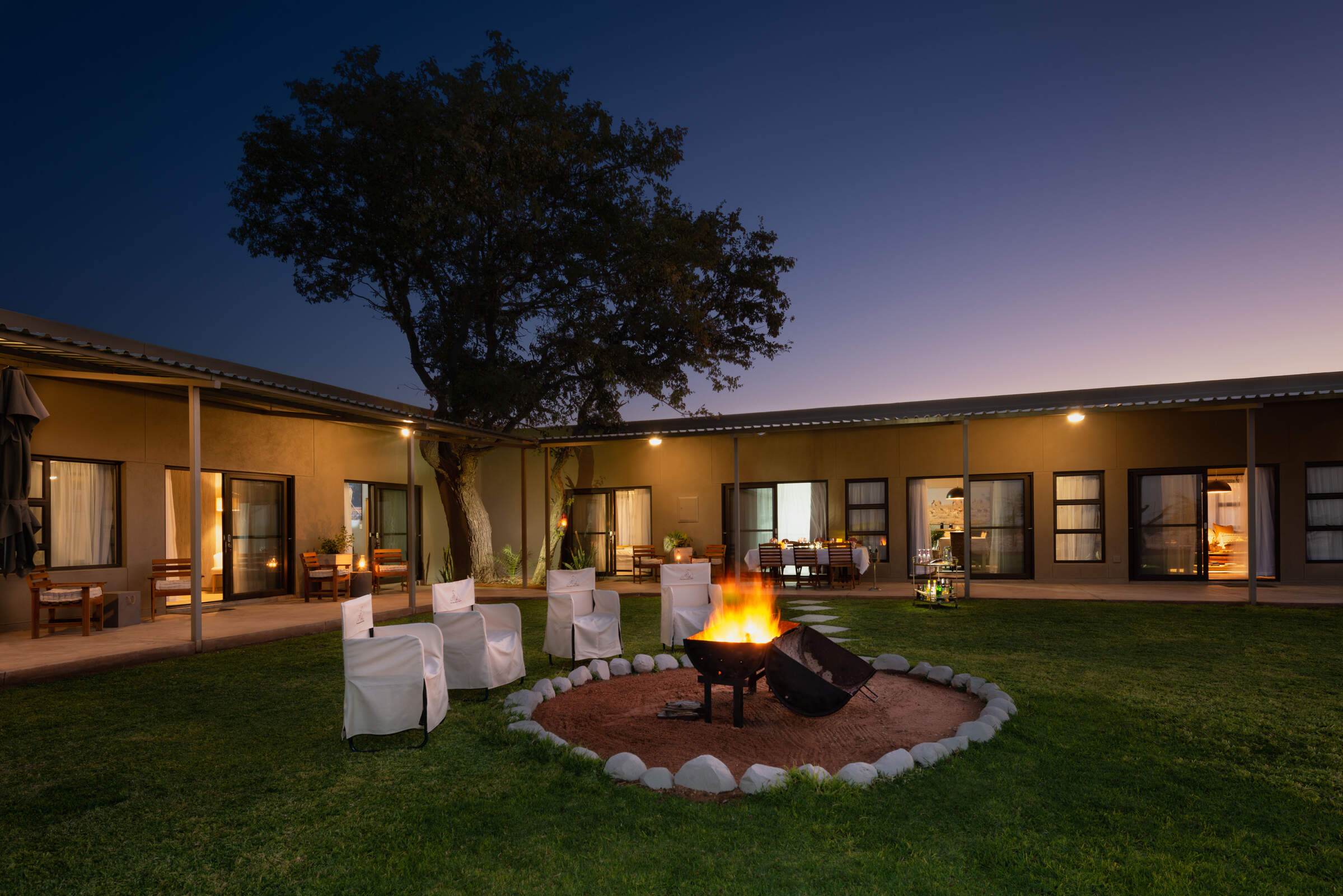
Safari House
The private Safari House on the Etosha Heights reserve is a great option families or friends travelling together.
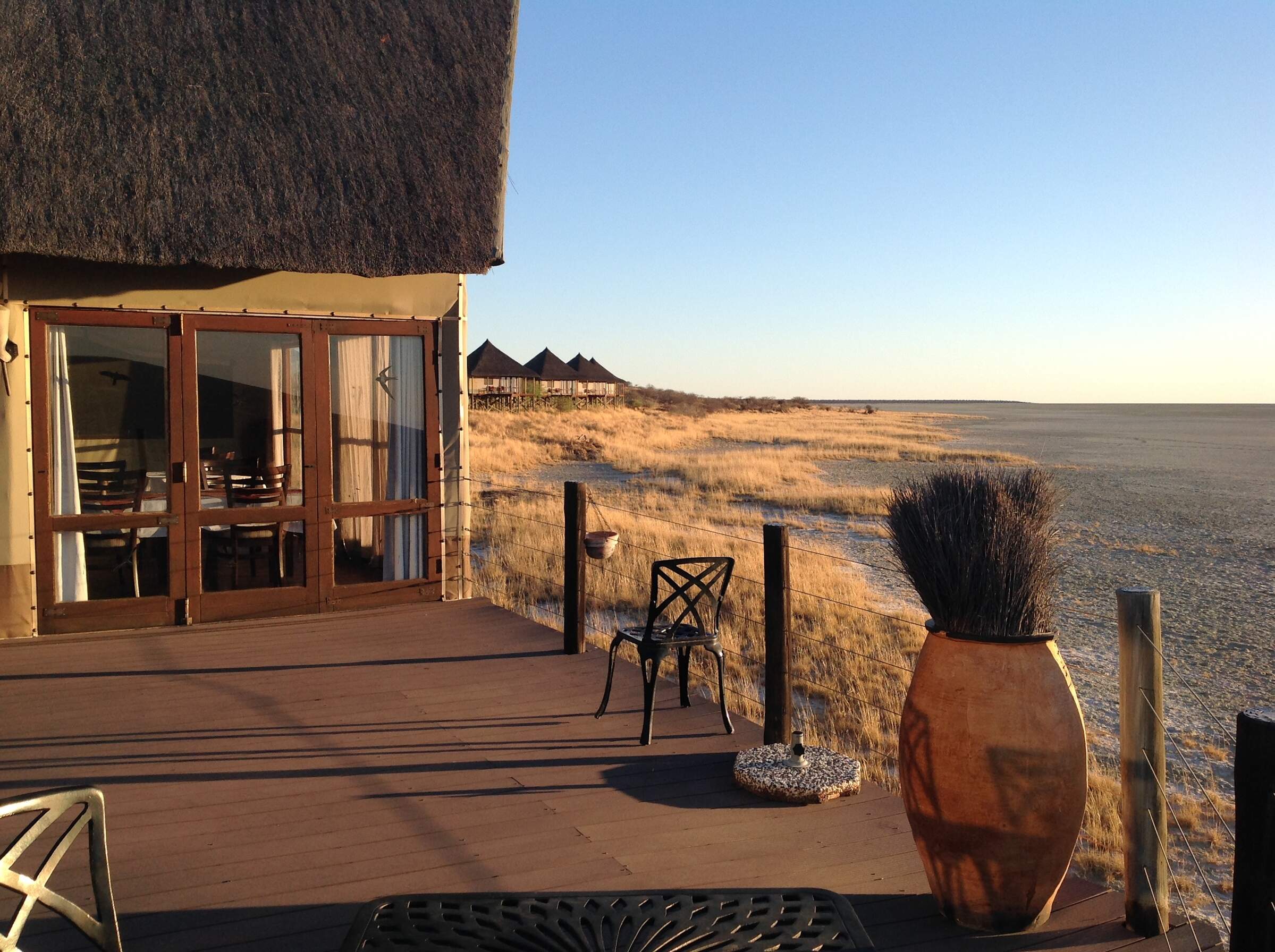
Onkoshi Camp
Onkoshi Camp is owned and run by Namibia Wildlife Resorts. Built on elevated wooden platforms it overlooks Etosha Pan.
When to go to Etosha National Park
Our month by month guide: What it's like to visit Dolomite Camp in Etosha National Park
Jan
Feb
Mar
Apr
May
Jun
Jul
Aug
Sep
Oct
Nov
Dec
Etosha National Park in January
January marks the start of Etosha's main rainy season. The Etosha Pan, usually a vast expanse of white clay, may partially fill with water in good rainy season, attracting flamingos and other migratory birds. The landscape transforms into a lush green oasis, providing ample food for wildlife. Many animals give birth during this time, offering chances to see newborns.
While game viewing can be challenging due to dispersed wildlife and thick vegetation, birdwatching is excellent. Migratory species arrive and birds display breeding plumage. The Okaukuejo and Halali waterholes remain active, though less crowded than in dry months. Visitors should be prepared for occasional thunderstorms and potentially muddy roads, especially around Fischer's Pan.
The vibrant greenery and the presence of young animals make this a fantastic time for photography.
- Variable weather: hot, dry or humid with rain
- Occasional localised thunderstorms in Etosha
- Many animals with young; spectacular birdlife
- Wildlife dispersed, harder to see in Etosha
- Fewer tourists; low rates at most lodges
Our view
This is not a great time to visit
Weather in January
Etosha National Park in February
February is typically Etosha's wettest month. The Etosha Pan may be partially filled, creating a spectacular sight and attracting numerous waterbirds, including flamingos. The landscape is vibrantly green, with many animals raising their young.
While game viewing can be more challenging due to the abundance of water and vegetation, patient observers can spot a variety of wildlife, and share their sightings with fewer other visitors. Birdwatching is excellent, with many species in breeding plumage. The Fairy Tale Forest near Okaukuejo is particularly lush during this time.
Visitors should be prepared for occasional thunderstorms and potentially challenging road conditions, especially in the eastern part of the park. The lush environment and the presence of young animals provide a unique opportunity to witness the park's life cycle.
- Variable weather with occasional thunderstorms
- Bush feels alive; birdlife at its peak in Etosha
- Wildlife in Etosha dispersed, harder to spot
- A variety of newborn and young wildlife to see
- Few tourists; lowest rates for accommodations
Our view
This is not a great time to visit
Weather in February
Etosha National Park in March
As Etosha's main rains taper off, March offers a mix of wet and dry days. The landscape remains green and alive, with insects and smaller animals more easily seen, and many birds and animals are finishing raising their young.
The Etosha Pan may still hold some water, attracting flamingos and other waterbirds. Game viewing improves as the month progresses and animals start to herd together at permanent water sources. The Okaukuejo, Halali, and Namutoni waterholes become increasingly active.
Birdwatching remains excellent, with many migrant species still around. The Dolomite Camp area in the west offers good chances to spot rarer antelope species like black-faced impala.
The transition from wet to dry conditions provides a fascinating glimpse into the park's seasonal changes.
- Weather variable; thunderstorms less frequent
- Animals well-fed after months of abundance
- Wildlife in Etosha still dispersed, harder to see
- Migrant birds prepare to leave the park
- Few visitors; rates often low at Etosha lodges
Our view
A good time to visit, with pros & cons
Weather in March
Etosha National Park in April
April typically sees dry weather dominating in Etosha, with decreasing chances of rain. The landscape remains relatively green, and animals are in excellent condition with shiny coats. Increasing numbers of elephants seen as the herds begin to use the permanent water sources. The Okaukuejo waterhole becomes particularly active, especially in the evenings.
Photographers benefit from clear air and lush, green backdrop. Night drives from camps like Halali offer chances to see nocturnal animals. Birdwatching remains good, though some migratory species begin to depart, and the Fischer's Pan area can still be productive for waterbirds if there's residual water from the rainy season.
The shift towards drier conditions improves the chances of wildlife sightings.
- Becoming drier and cooler, especially at night
- Few visitors except around Easter; low rates
- Wildlife in Etosha still relatively spread out
- Migrant birds have largely left the park
- Fresh air and often green landscapes in Etosha
Our view
A good time to visit, with pros & cons
Weather in April
Etosha National Park in May
May marks the transition to Etosha's dry season. The landscape starts to dry out, but may still retain some greenery. Wildlife increasingly gathers around permanent water sources, making game viewing more predictable. The Okaukuejo, Halali, and Namutoni waterholes become excellent spots for animal observation – especially when floodlit after dark. Night drives offer opportunities to see nocturnal species like leopards and owls.
The Etosha Pan is usually dry, creating a stark, shimmering backdrop for photography. Birdwatching remains good, with 340 different species recorded in the park. The western part of the park, accessible from Dolomite Camp, offers chances to see rarer species like black rhino in a less frequently explored environment. The dry season's onset brings a new rhythm to the park's wildlife dynamics.
- Lovely weather: dry, warm days & cool nights
- Etosha drying out; landscapes still partly green
- Fantastic air clarity; ideal for photography
- Visitor numbers low; lodge rates still low
- Wildlife starting to gather at Etosha waterholes
Our view
A very good time to visit
Weather in May
Etosha National Park in June
June brings cooler temperatures with clear skies to Etosha. The landscape is drying out, encouraging animals like elephants, rhino and giraffe to waterholes. This makes for excellent game viewing, especially at popular spots like Okaukuejo and Halali. Night drives on private Etosha reserves, like Ongava, are particularly productive.
The dry Etosha Pan creates mirages and a unique backdrop for photography, perhaps a lone ostrich crossing the stark salt crust. Birdwatching remains rewarding, with bright colours standing out in drier vegetation. The Namutoni area, with its fort, provides a mix of wildlife viewing and historical interest.
Cooler temperatures making walking safaris enjoyable in Etosha’s adjacent wildlife reserves, like Etosha Heights.
- Clear days, cold nights in Etosha National Park
- Great air quality; perfect for photographers
- Moderate lodge rates; shoulder season begins
- Wildlife gravitates to Etosha's waterholes
- Some greenery remains in parts of the park
Our view
A very good time to visit
Weather in June
Etosha National Park in July
July is prime time for wildlife viewing in Etosha as animals, in particular predators, are more active later in cool mornings and earlier in the afternoons. The dry landscape concentrates animals around waterholes, making for predictable and spectacular sightings. The Okaukuejo waterhole is particularly active, especially at night when black rhinos often visit and jostle for position with elephants.
The stark white Etosha Pan creates a unique backdrop for photography, with heat mirages shimmering on the horizon.
The dry season's peak offers unparalleled wildlife viewing opportunities. Game drives along the southern edge of the pan offer excellent opportunities to see large herds of zebra, wildebeest, and antelope. Birdwatching is rewarding around waterholes, with species like eagles and vultures frequently sighted.
- Dry days, crisp nights; excellent for stargazing
- European holidays begin; more families visit
- Peak season; high rates, lodges often full
- Fantastic wildlife watching
- Animals concentrate around Etosha waterholes
Our view
A very good time to visit
Weather in July
Etosha National Park in August
August is the height of the dry season in Etosha, offering excellent wildlife viewing opportunities. Animals concentrate around waterholes, with a variety of predators and prey often seen at any one time. Night viewing at the more secluded yet floodlit waterhole at Halali is often rewarded with sightings of shyer leopard and porcupine.
The dry season's intensity brings wildlife into sharp focus. The open plains along the edge of the Etosha Pan are good for seeing large herds of zebra and wildebeest, and often cheetah too. Predators often lie in wait for their prey near waterholes offering sightings of hunts to patient game viewers.
Birdwatching remains rewarding, with raptors like bateleur and martial eagles frequently sighted.
- Dry days, cold nights; clear skies in Etosha
- Busy by Namibian standards; family rooms full
- Peak season; high rates, advanced booking needed
- Excellent wildlife viewing in Etosha National Park
- Large herds gather at Etosha's waterholes
Our view
Fantastic: the very best time to visit
Weather in August
Etosha National Park in September
September offers peak wildlife viewing in Etosha. The extreme dry conditions concentrate animals around waterholes, making for spectacular sightings of multiple species. The Okaukuejo waterhole is particularly active, with elephants, rhinos, and lions frequently visiting.
The last months of the dry season showcases the park's wildlife at its most concentrated. The stark landscape of the dry Etosha Pan creates dramatic backdrops for photography. Game drives along the pan's edge offer chances to see large herds of zebra, springbok, and oryx as well as lion prides and cheetah. The western part of the park, accessible from Dolomite Camp, often provides a more exclusive safari experience with good rhino sightings. Night drives on adjacent private reserves like Hobatere offer opportunities to see nocturnal animals such as genets and aardwolves.
Birdwatching is excellent, with species standing out clearly in the sparse vegetation.
- One of the best months for Etosha wildlife viewing
- Warm days, cold nights; temperatures rising
- Colourful birds stand out against a starker backdrop
- Etosha's waterholes teem with diverse wildlife
- High season; book Etosha accommodations early
Our view
Fantastic: the very best time to visit
Weather in September
Etosha National Park in October
October is typically Etosha's hottest and driest month, offering excellent wildlife viewing. The intense heat and dry conditions heighten the drama of wildlife interactions.
Animals concentrate heavily around waterholes, with spectacular sightings common at Okaukuejo, Halali, and other permanent water sources. Patient photographers spending time at waterholes are richly rewarded. Large herds of zebra, wildebeest, and various antelope species can be seen along the pan's southern edge. Predator sightings, including lions and cheetahs, are frequent as they target gathered and weakened prey. Thinning vegetation at Namutoni makes it easier to spot the dimunitive Damara dik dik – Namibia’s smallest antelope.
Birdwatching remains rewarding, with raptors and colourful rollers often spotted.
- Peak wildlife-viewing month in Etosha National Park
- Hot and dry; Etosha feels like a desert
- Air can be hazy with dust in some areas
- Peak time; expect high season rates in Etosha
- Etosha lodges often full, especially early October
Our view
A very good time to visit
Weather in October
Etosha National Park in November
November marks the transition to Etosha's rainy season, bringing change to the landscape and wildlife behaviour. Early rains may green the vegetation, dispersing some wildlife from waterholes. However, game viewing remains good, especially around permanent water sources like Okaukuejo and Halali’s floodlit waterholes.
The first rains can create dramatic scenes as animals celebrate the water's arrival, with plains game often giving birth. Predators often give birth at this time too, to coincide with the time of plenty. Migratory birds begin to return, and birds take to the skies in spectacular aerial shows as they catch more active insects.
Seasonal wildflowers and dramatic, thundery skies add interest to photographic compositions. Summer rains bring reptiles such as tortoises and chameleons out into the open. The onset of rains brings a refreshing change to the park's ecosystem.
- Variable month in Etosha, depending on rains
- If rain comes, explosion of vegetation and life
- Baby animals often born around mid-month
- Shoulder season; mid-range rates offer value
- Showers more likely later in the month in Etosha
Our view
A good time to visit, with pros & cons
Weather in November
Etosha National Park in December
December is often a drier month before January sees the main rainy season begin. The landscape begins to show green from November's rain and the odd rainshower in December. Many animals have young, so there’s the chance to watch frolicking calfs and lambs.
The combination of rainfall and sunshine rejuvenates the park's landscapes and wildlife. While wildlife disperses away from the waterholes with increased water availability, game viewing remains good, especially on the open plains along the southern edge of Etosha Pan. Birdwatching is excellent, with many species in breeding plumage and displaying for mates as well as migrant species arriving.
Visitors should be prepared for occasional thunderstorms and potentially muddy roads, especially in the eastern part of the park.
- Hot, sometimes humid with cooling showers
- Landscapes green where rain has fallen in Etosha
- New life and energy in the park's ecosystem
- Excellent for birdwatchers in Etosha
- Larger animals may be harder to spot
Our view
This is not a great time to visit
Weather in December

Looking for inspiration on where to travel next?
Visit our trip chooser to explore your options and find inspiration for your perfect African adventure
Inspire me